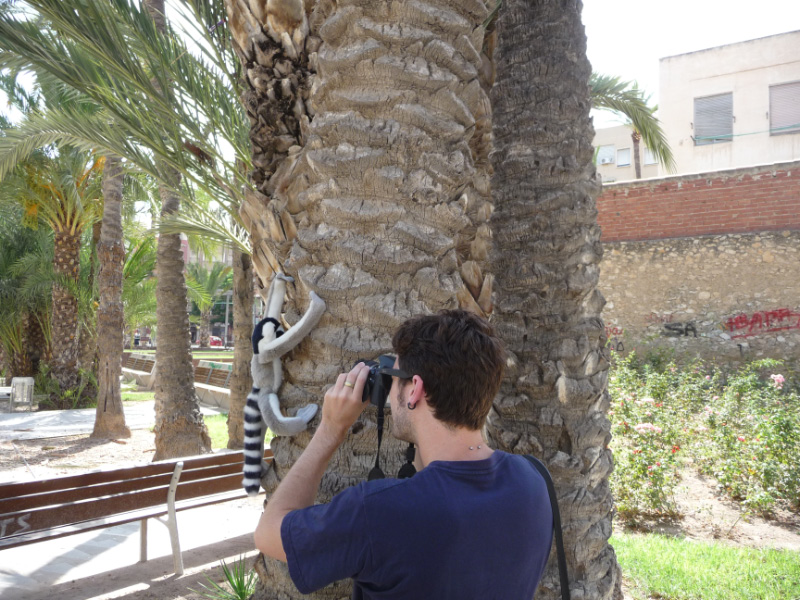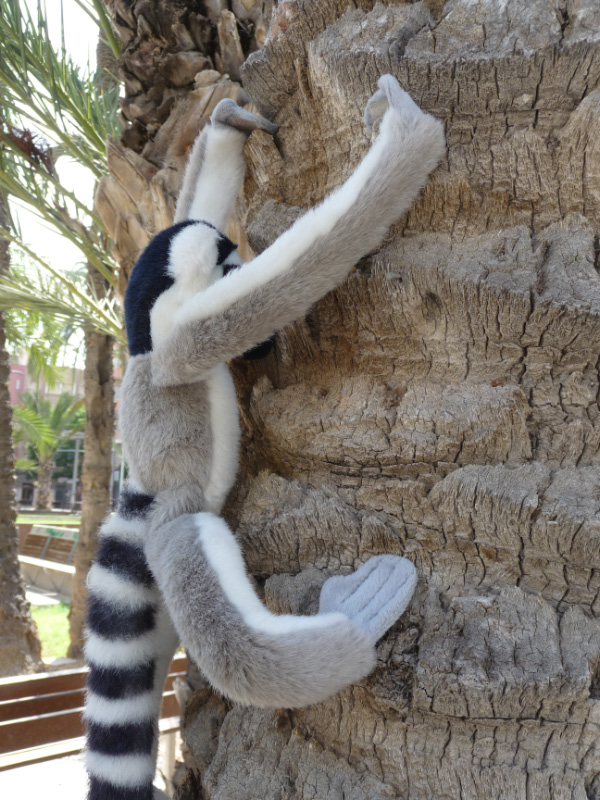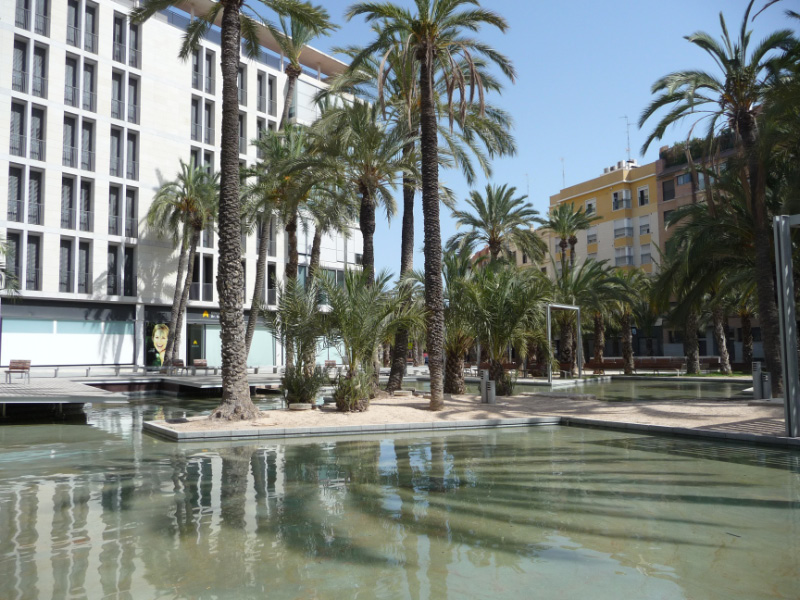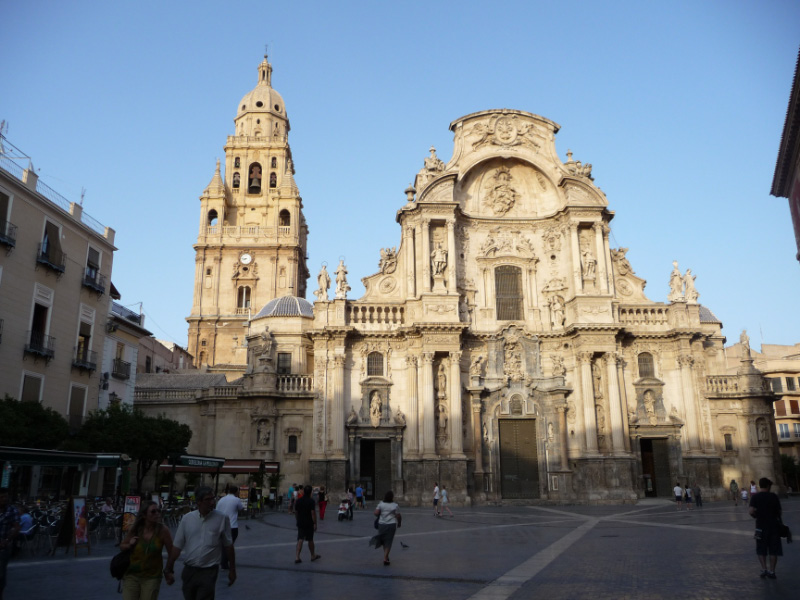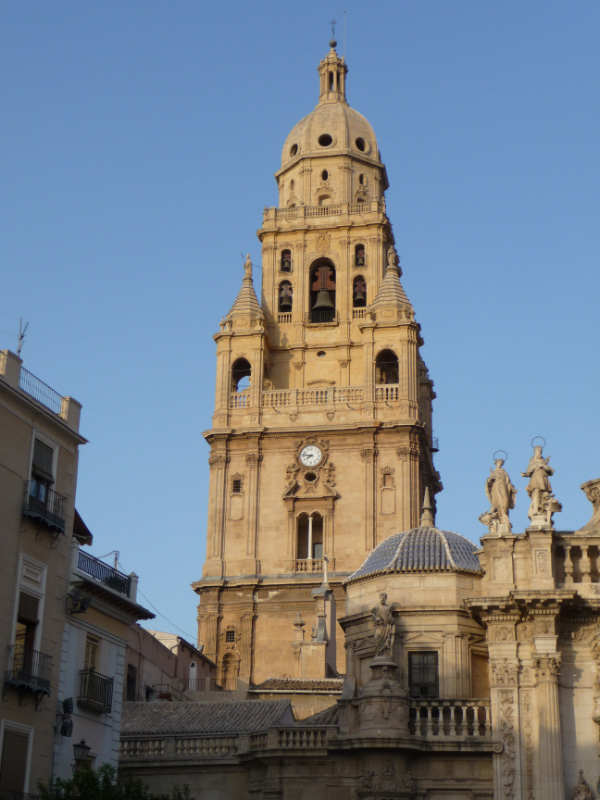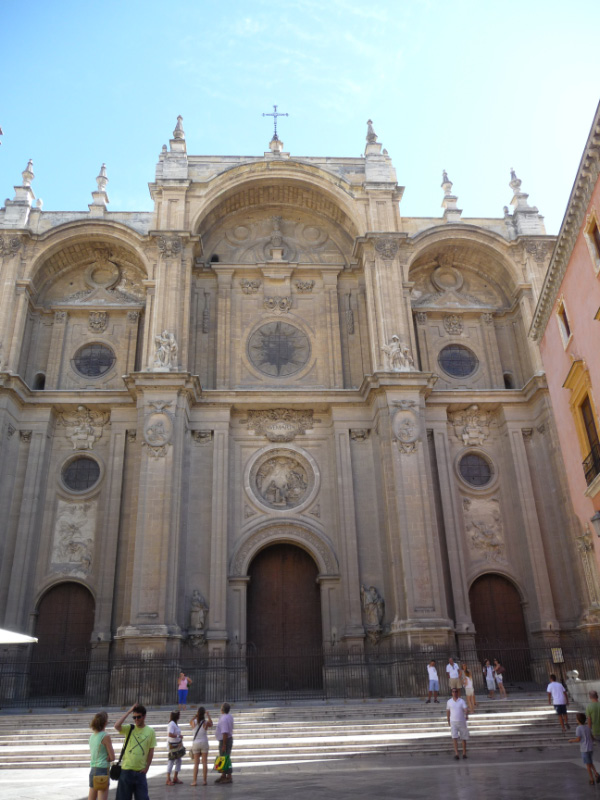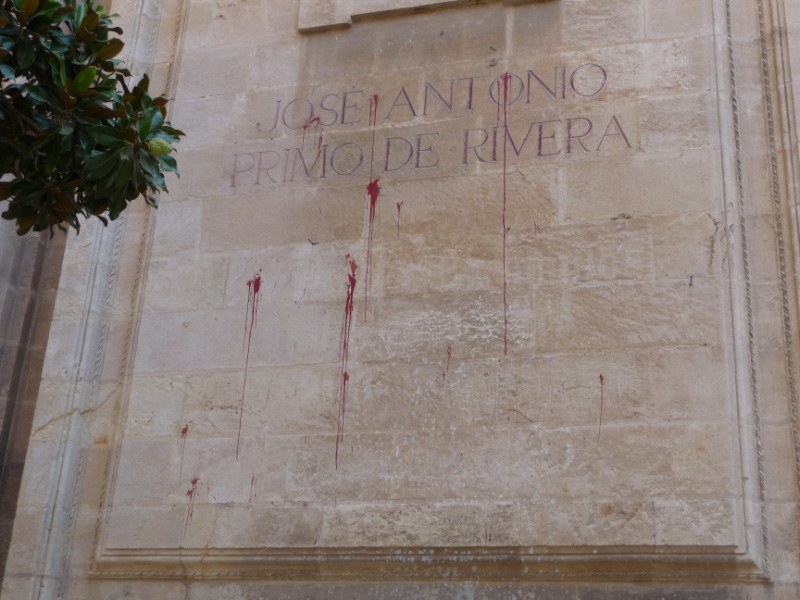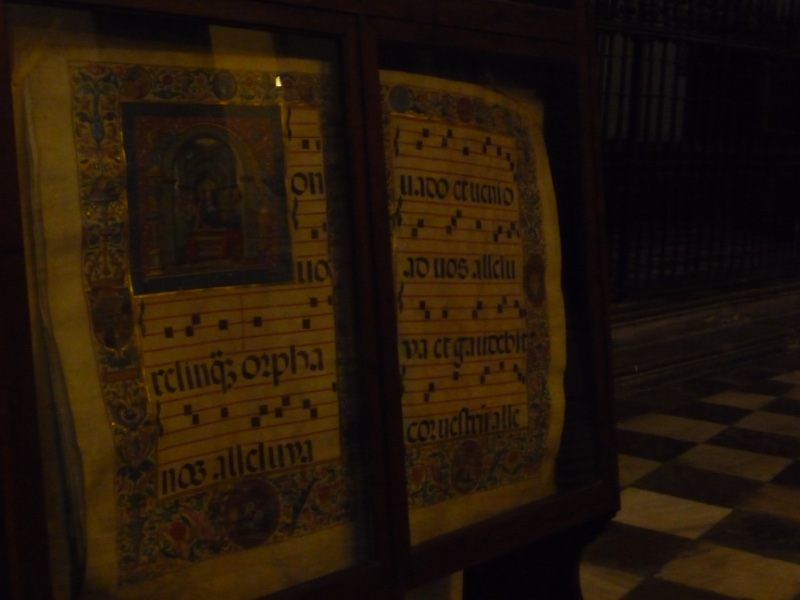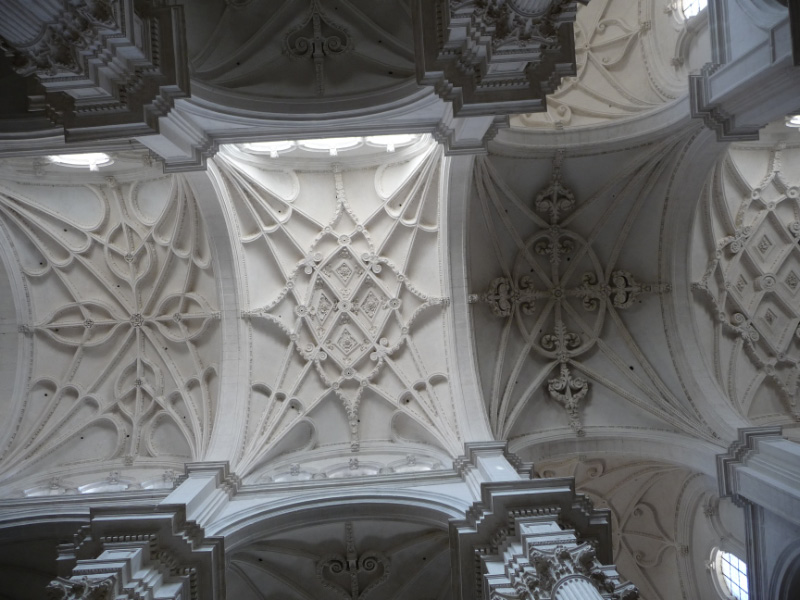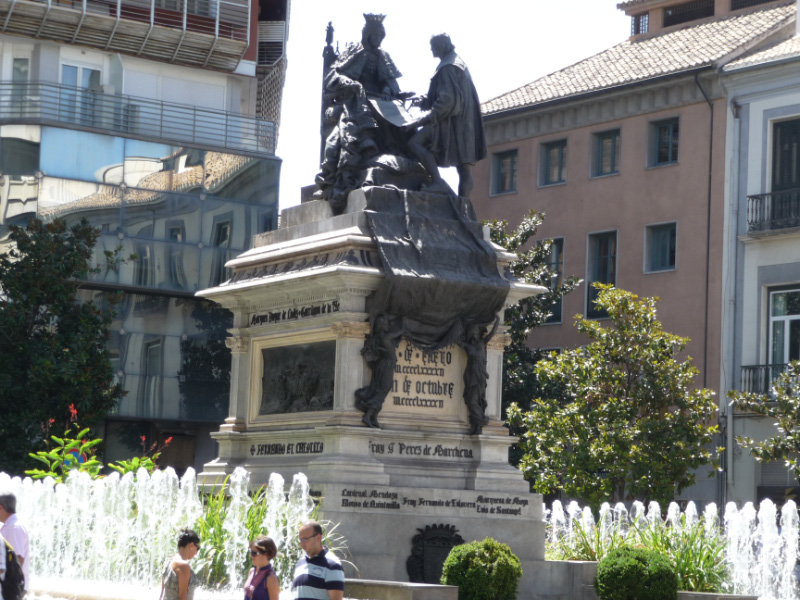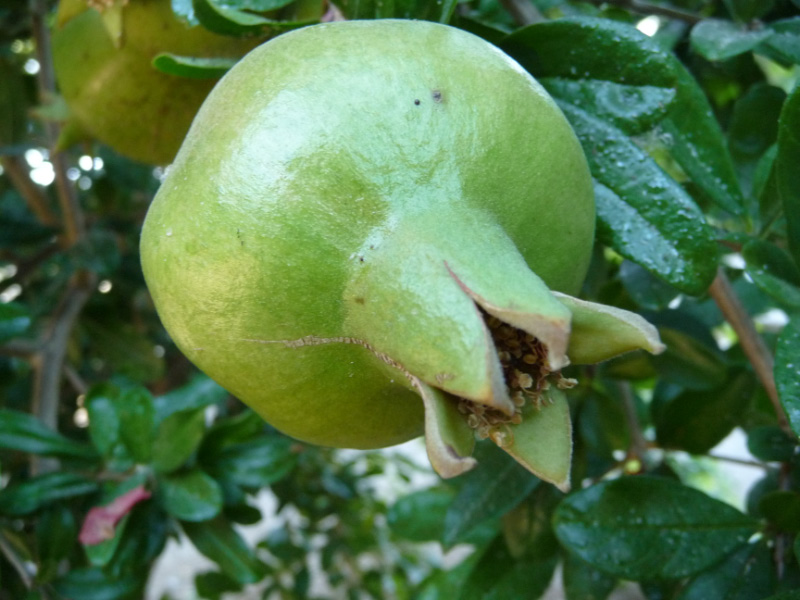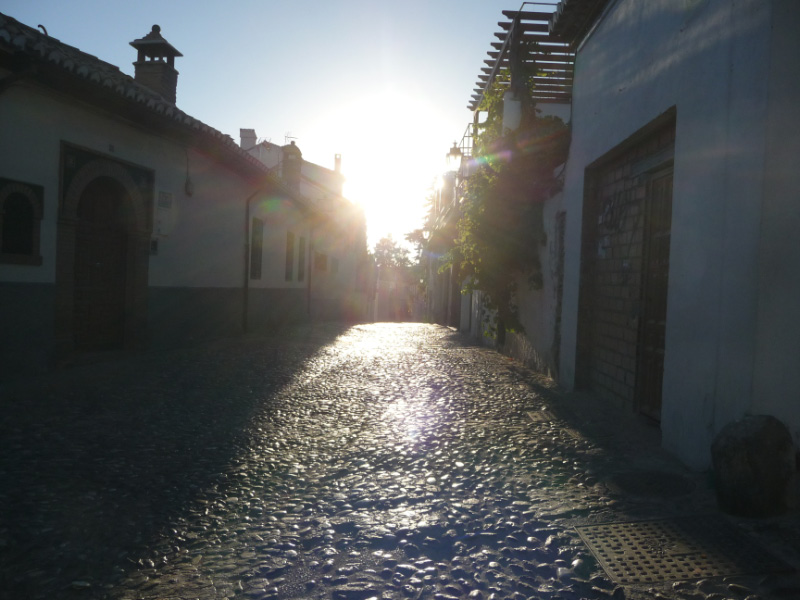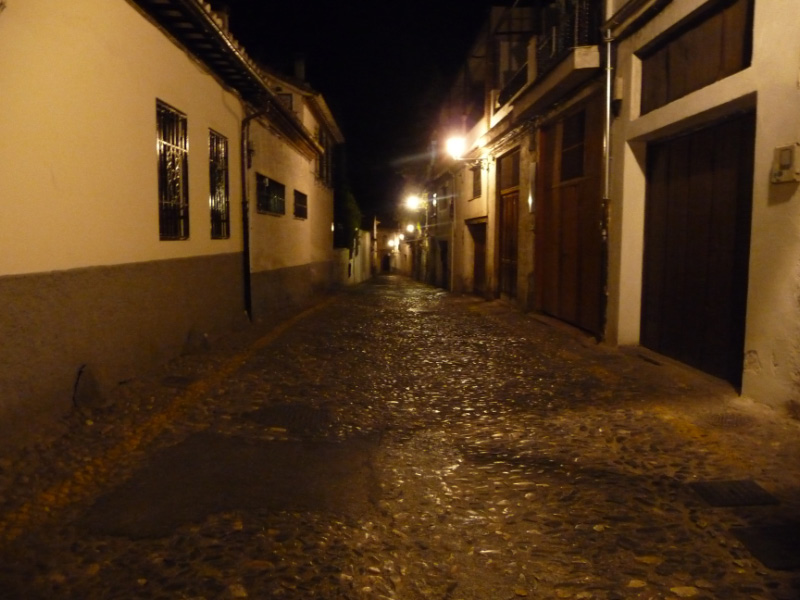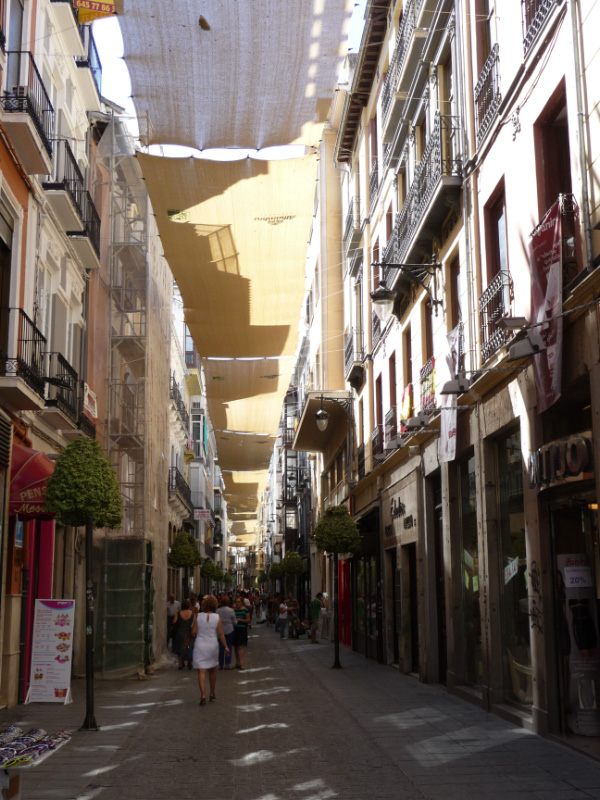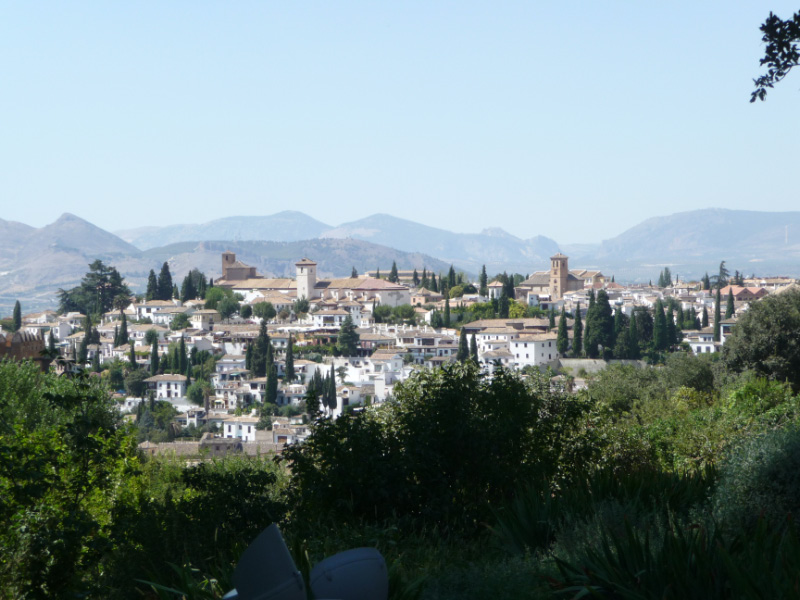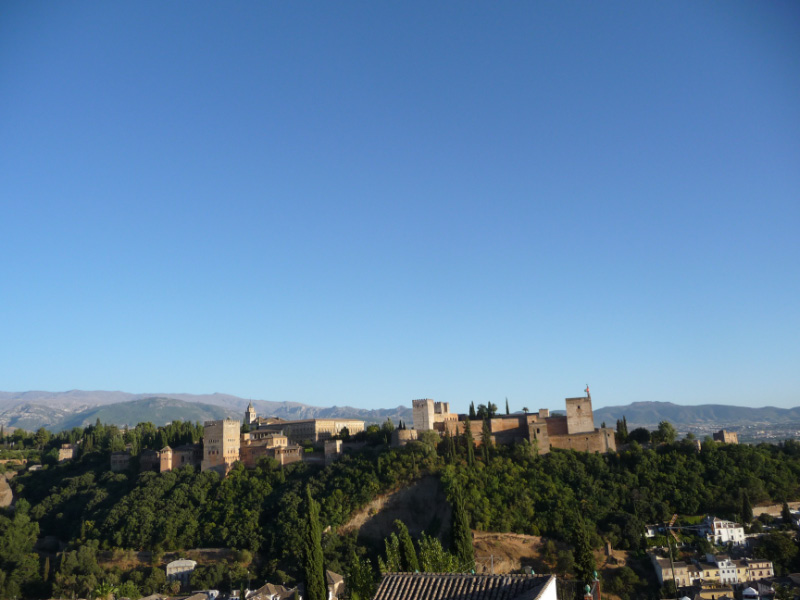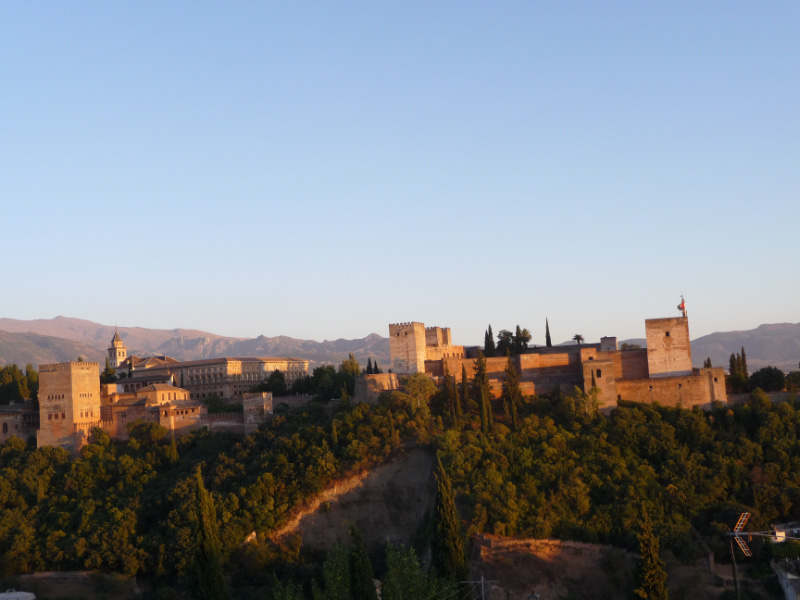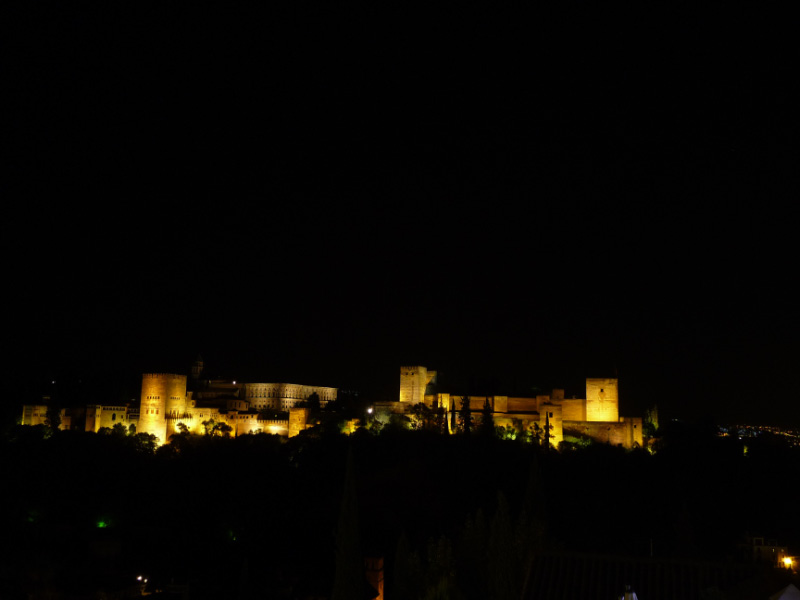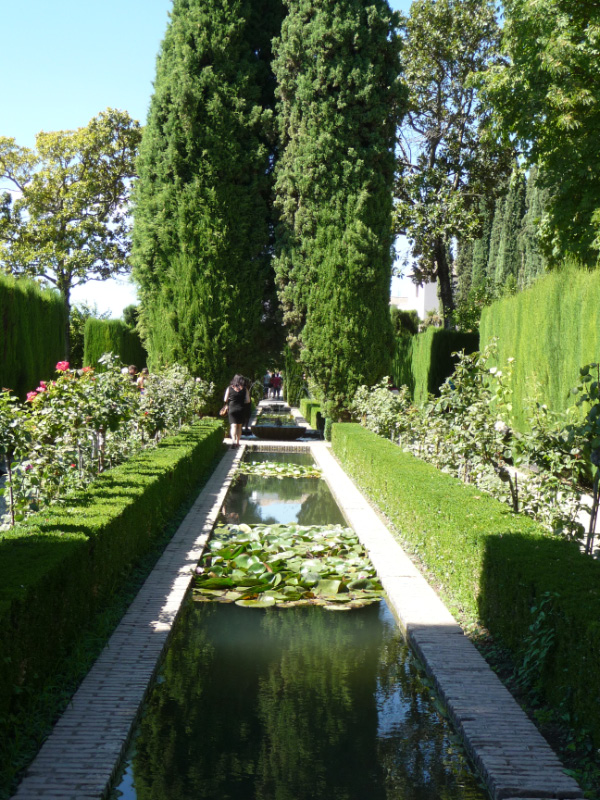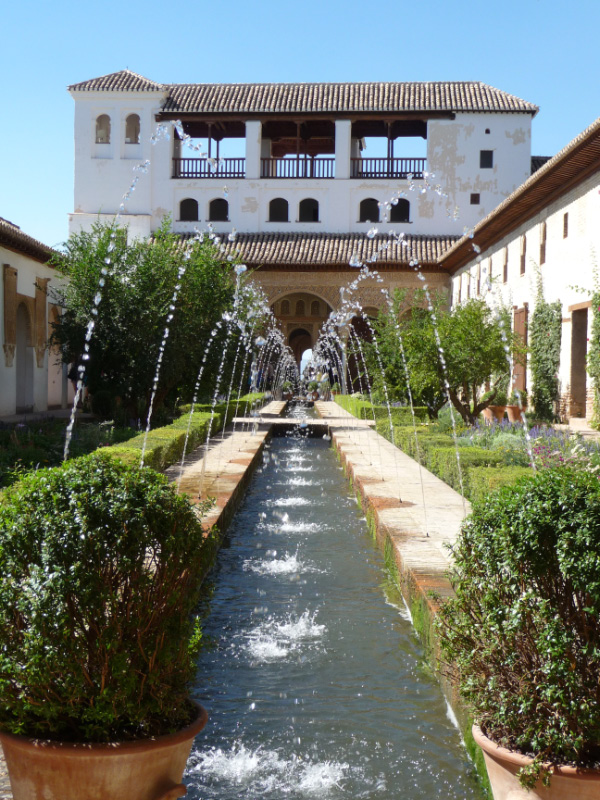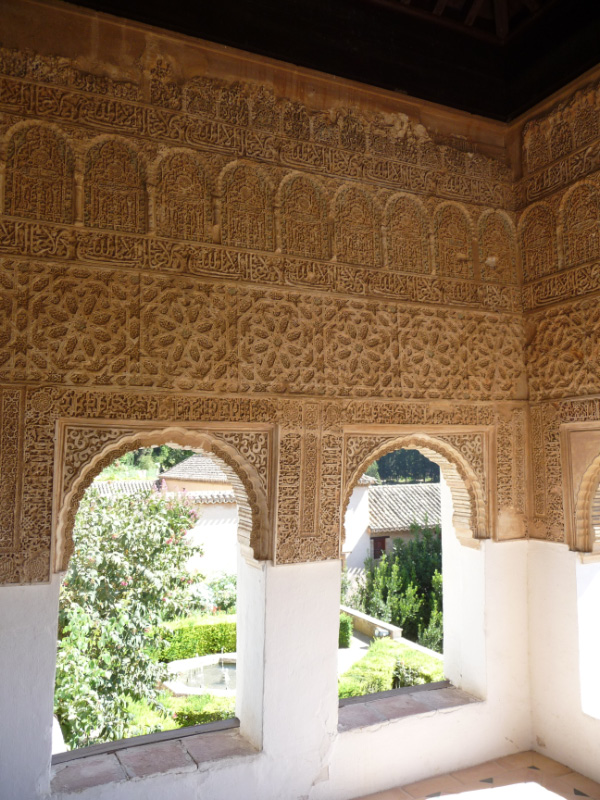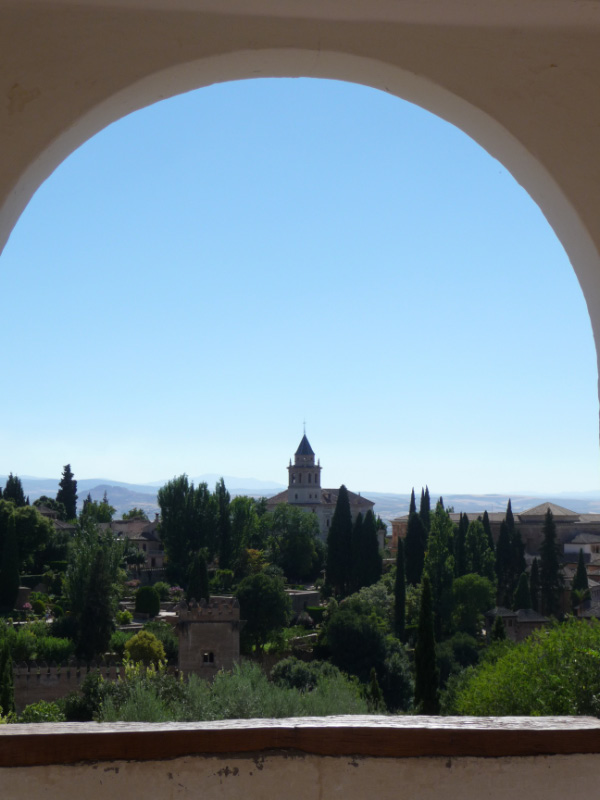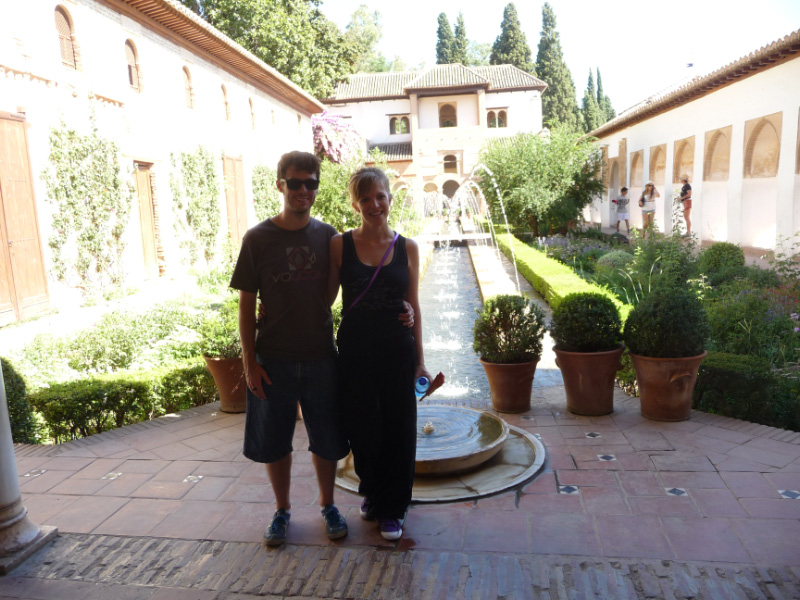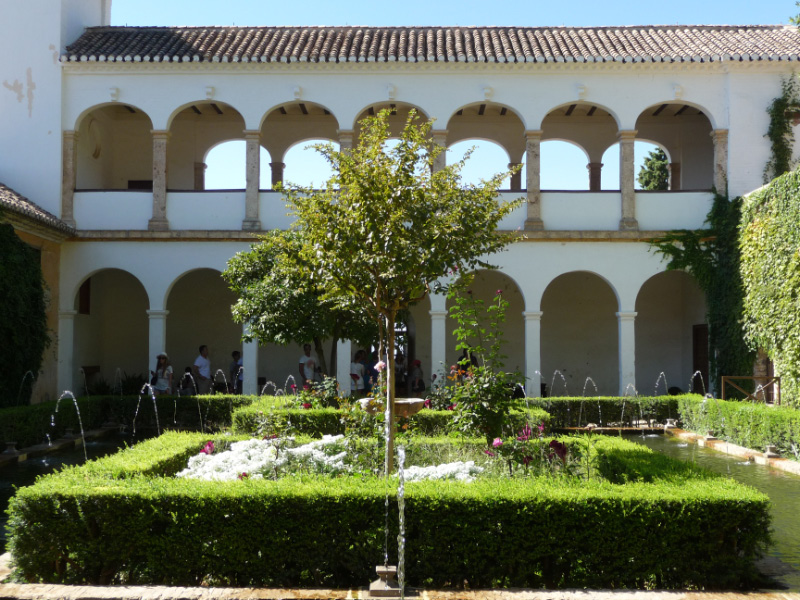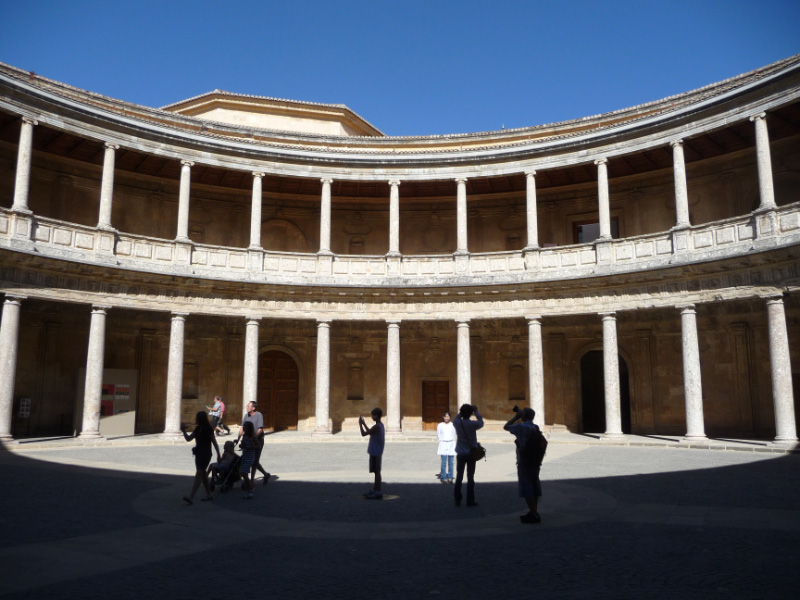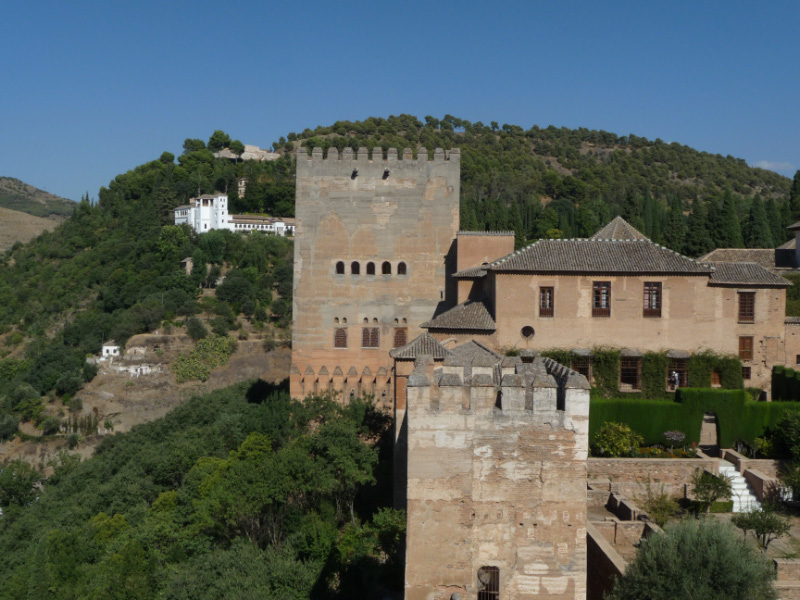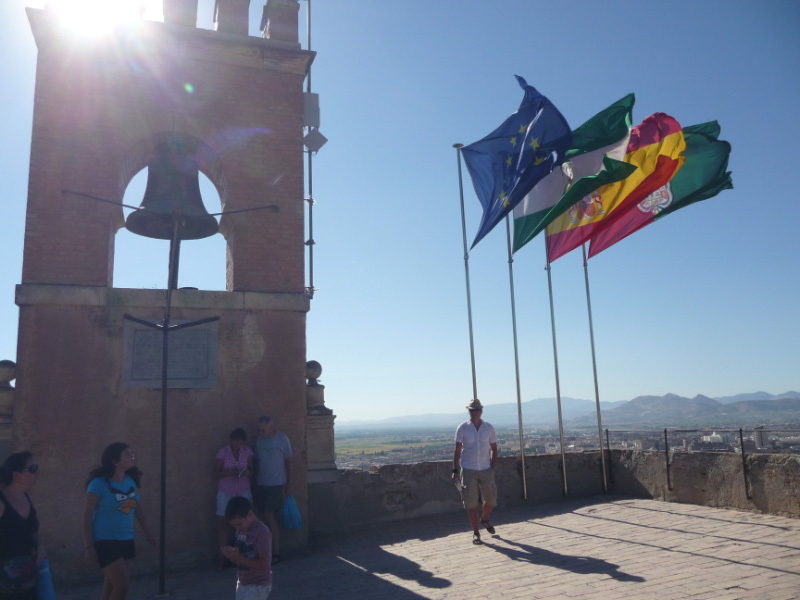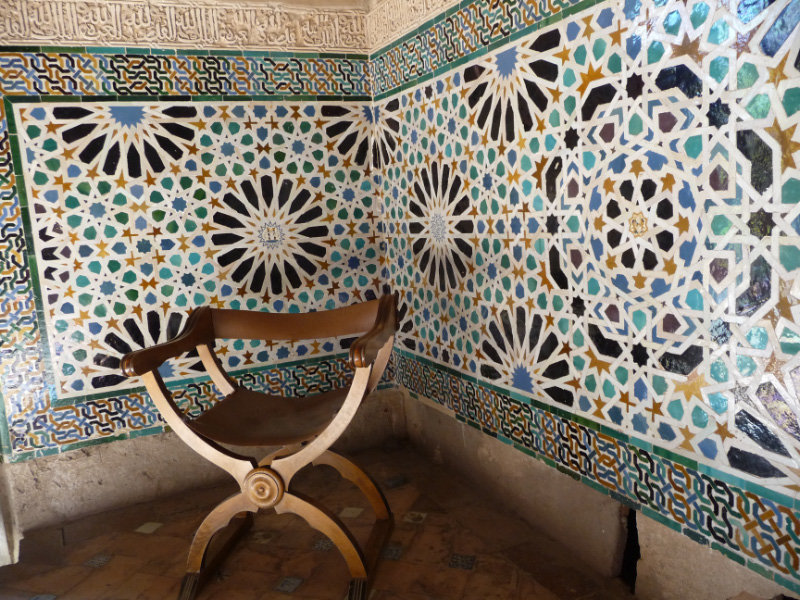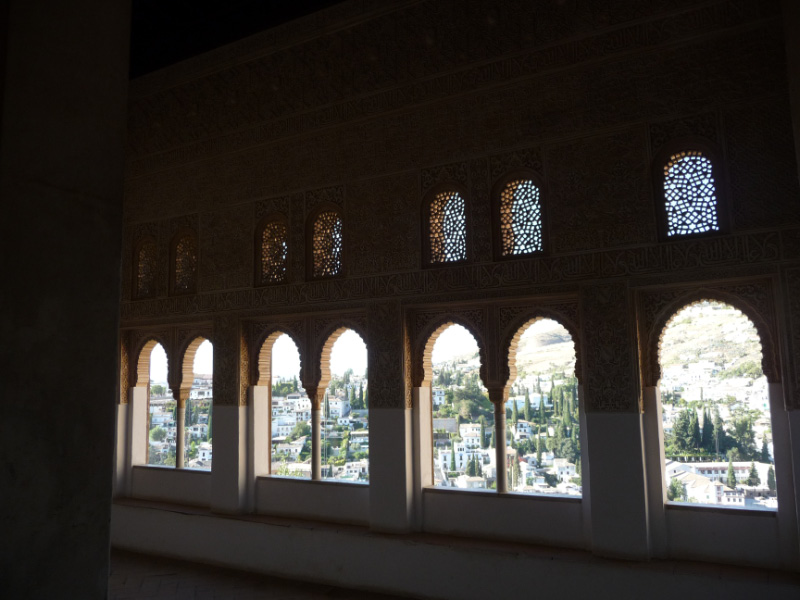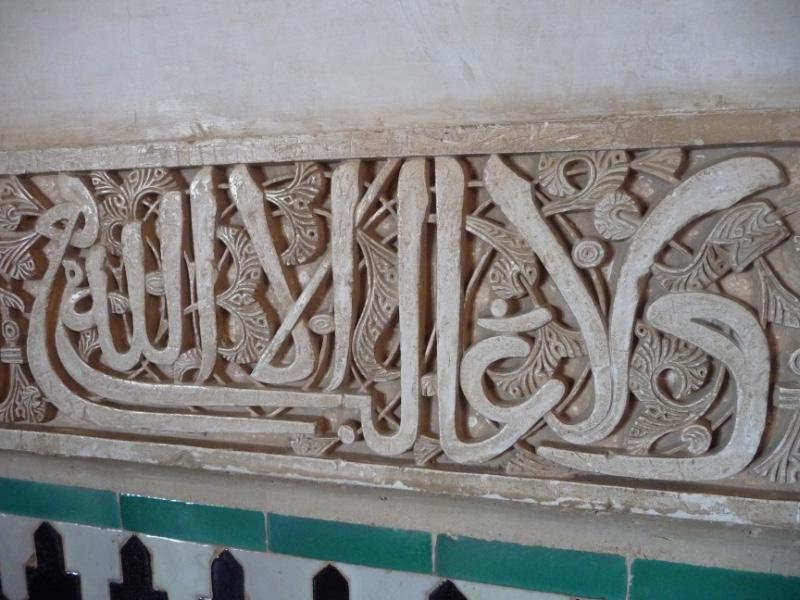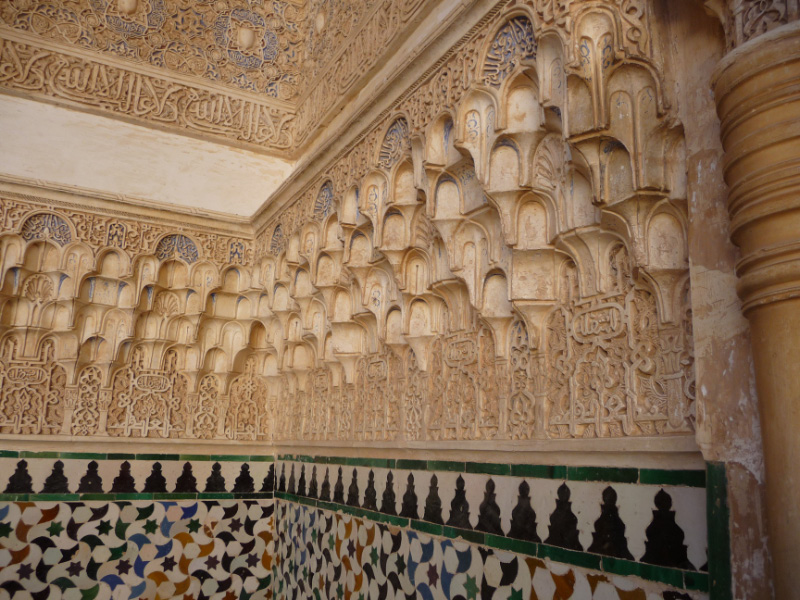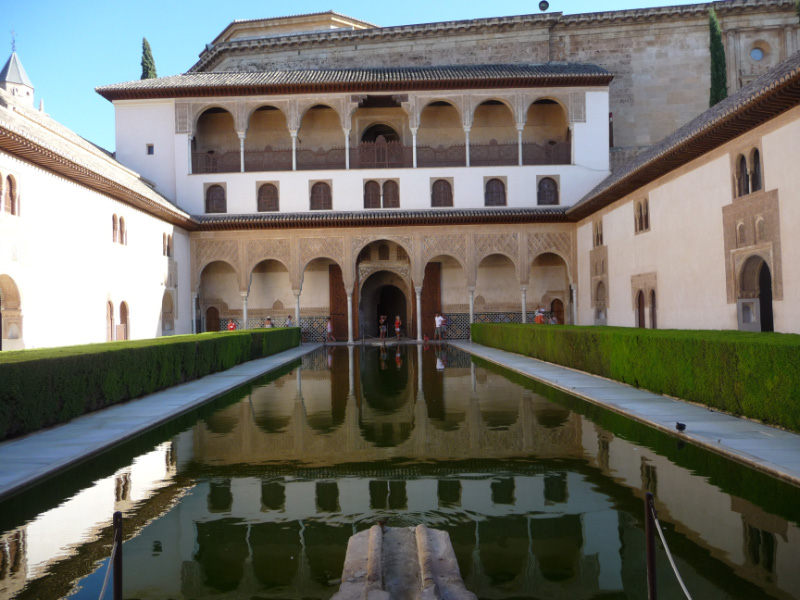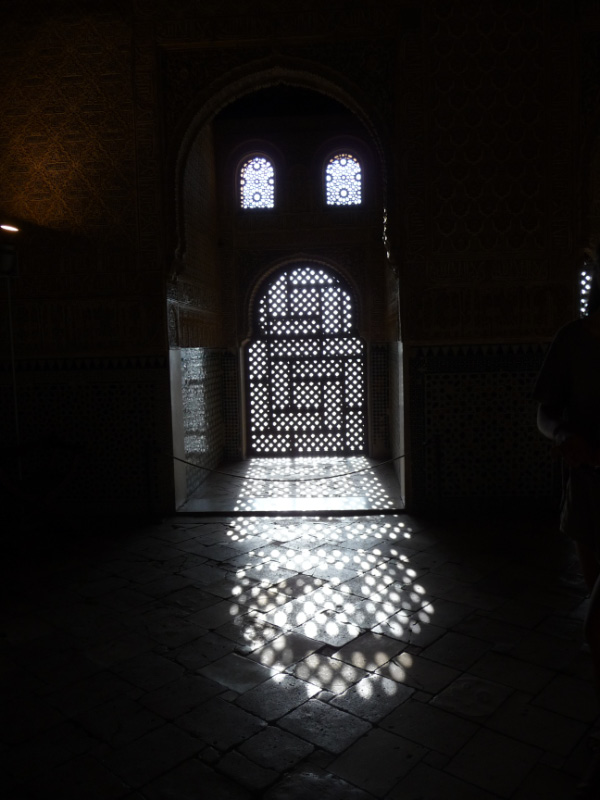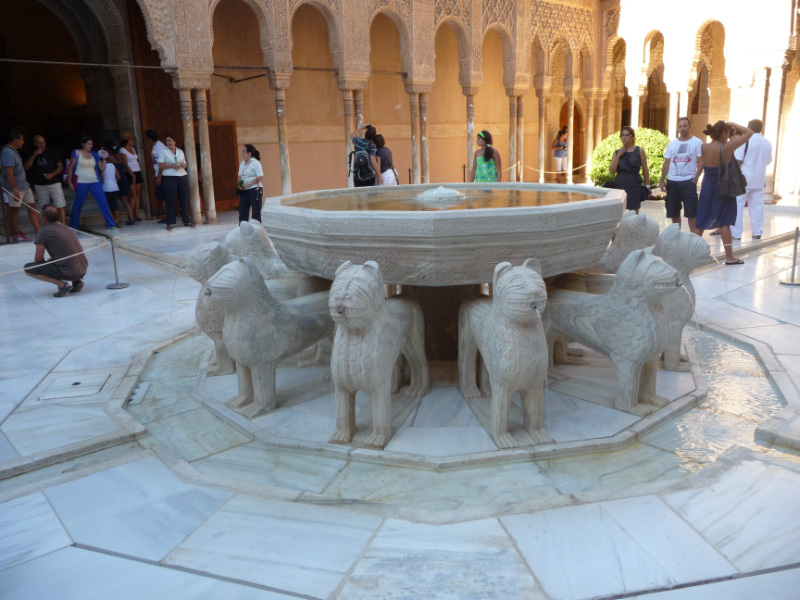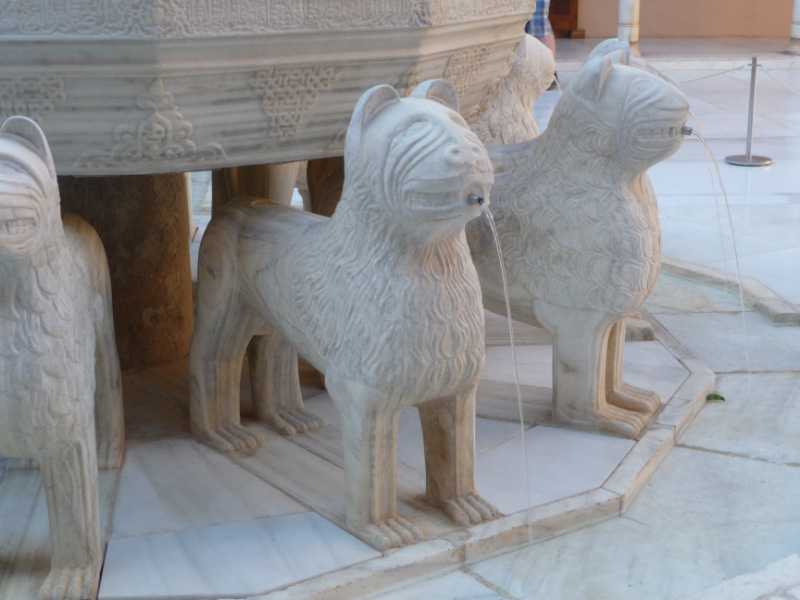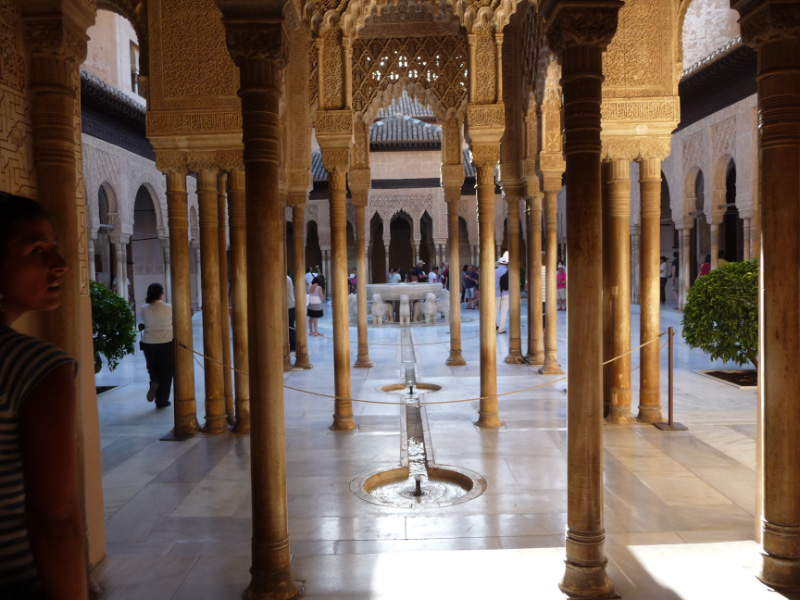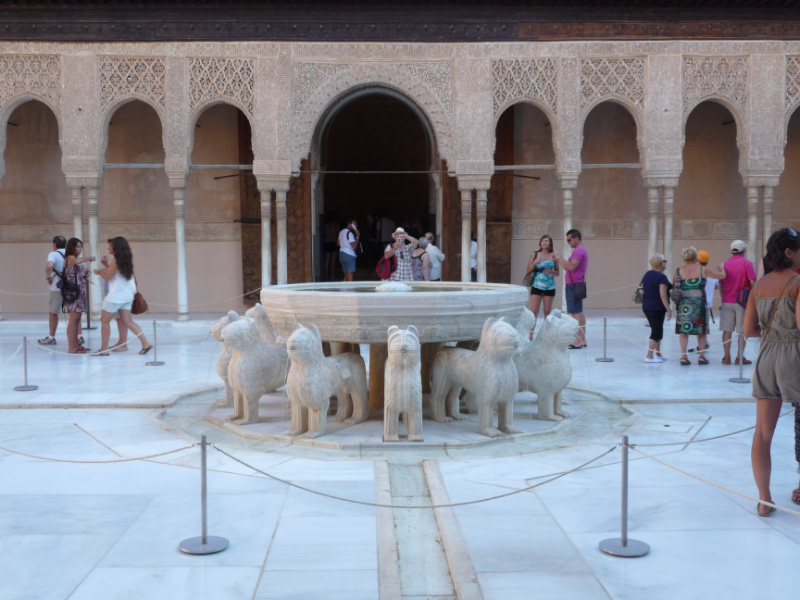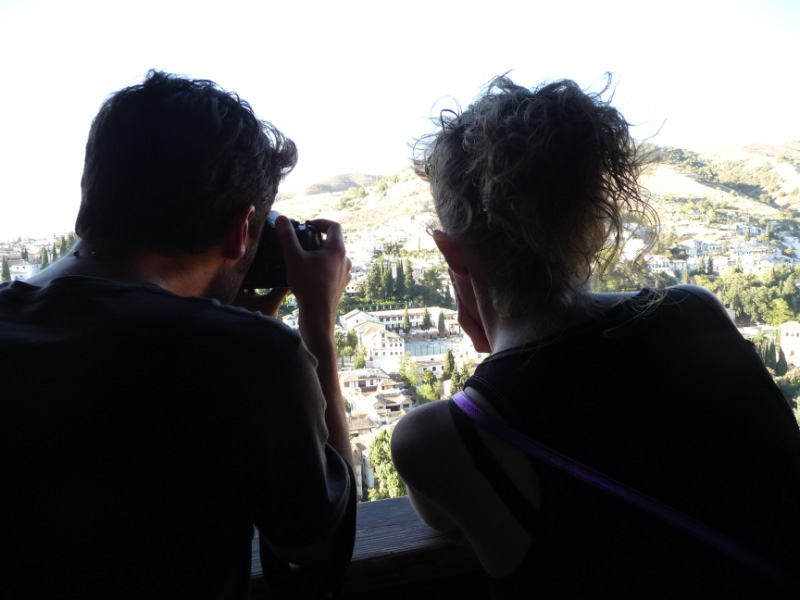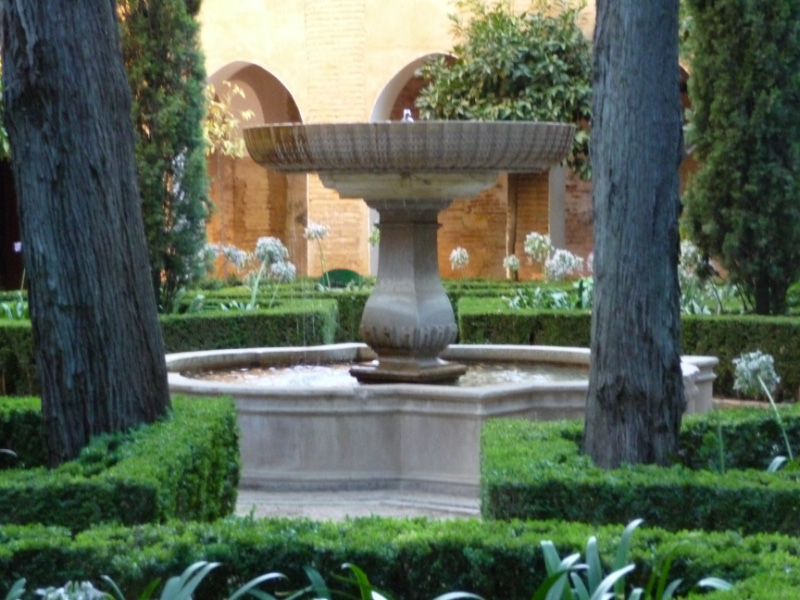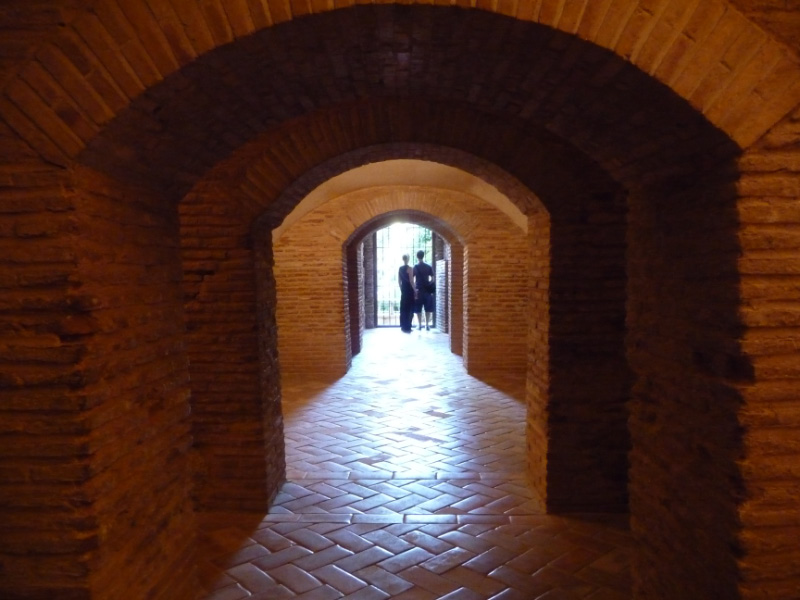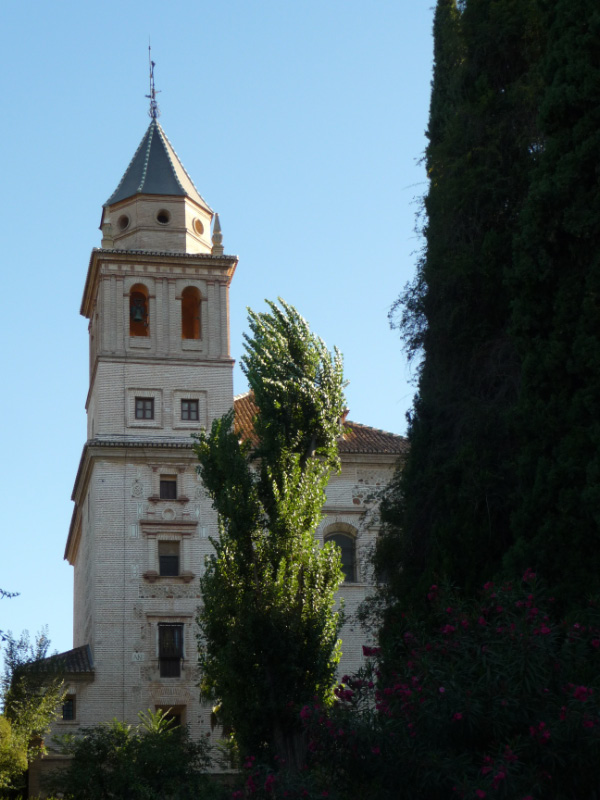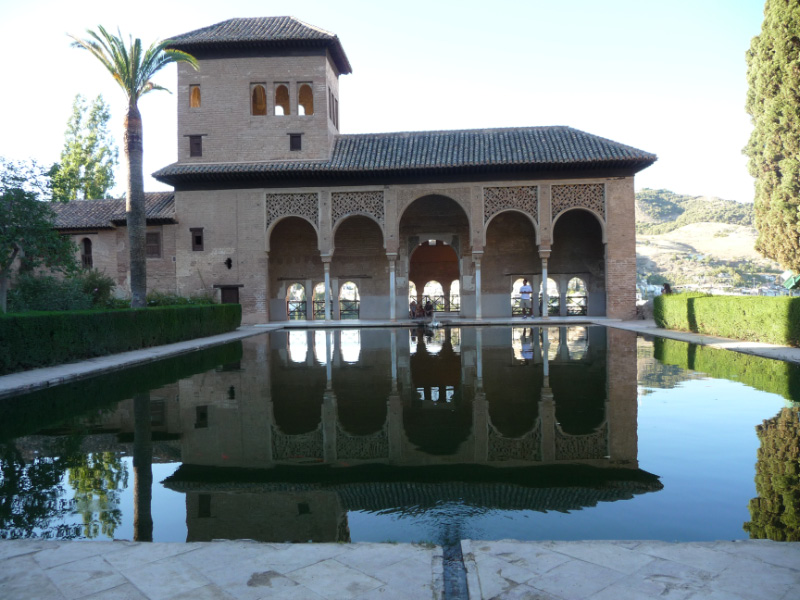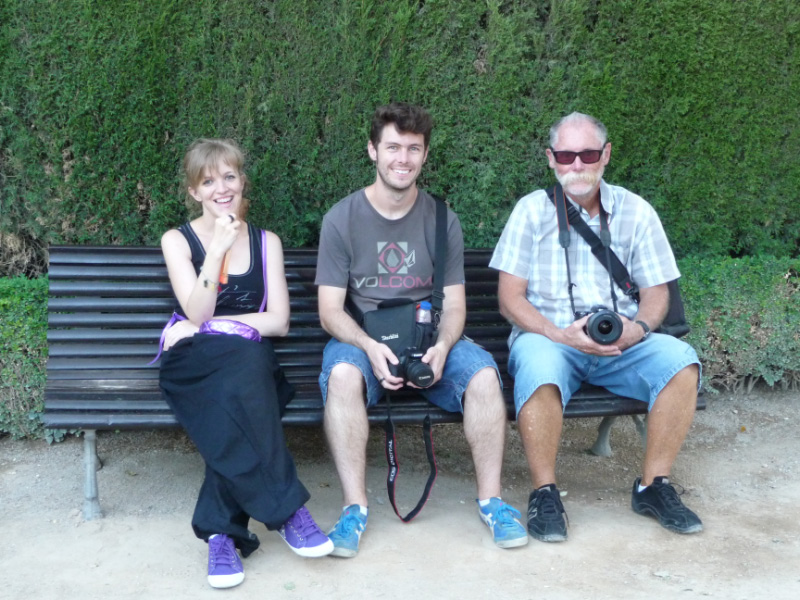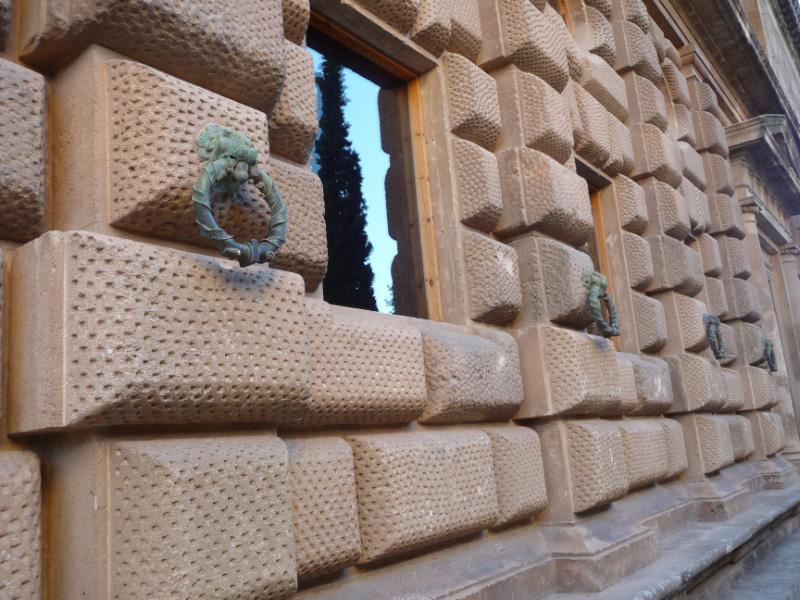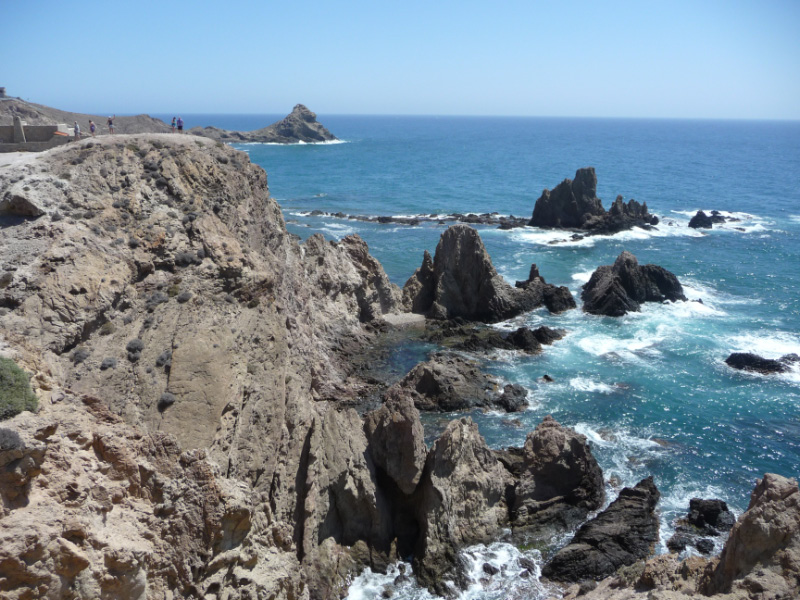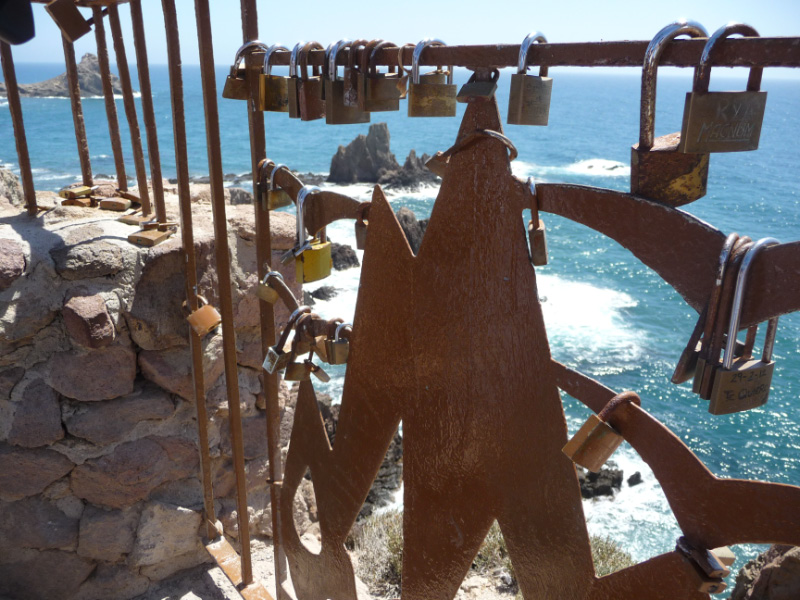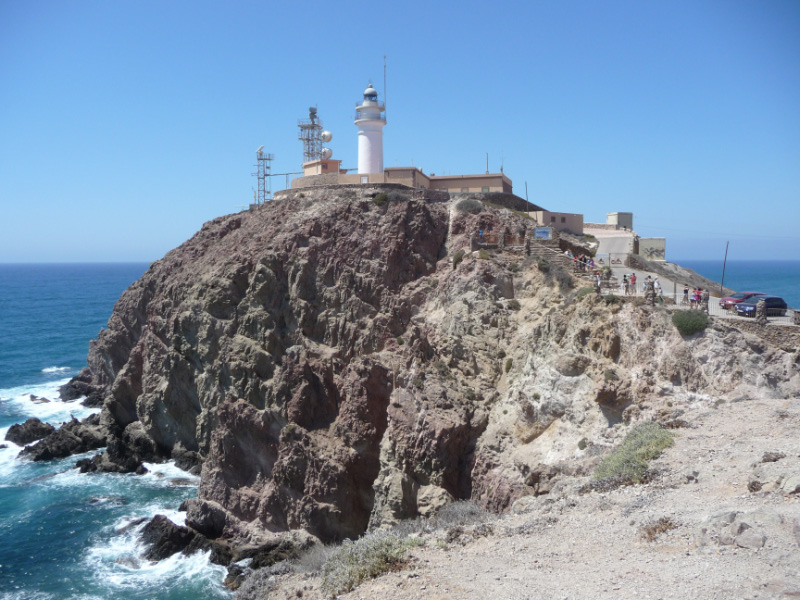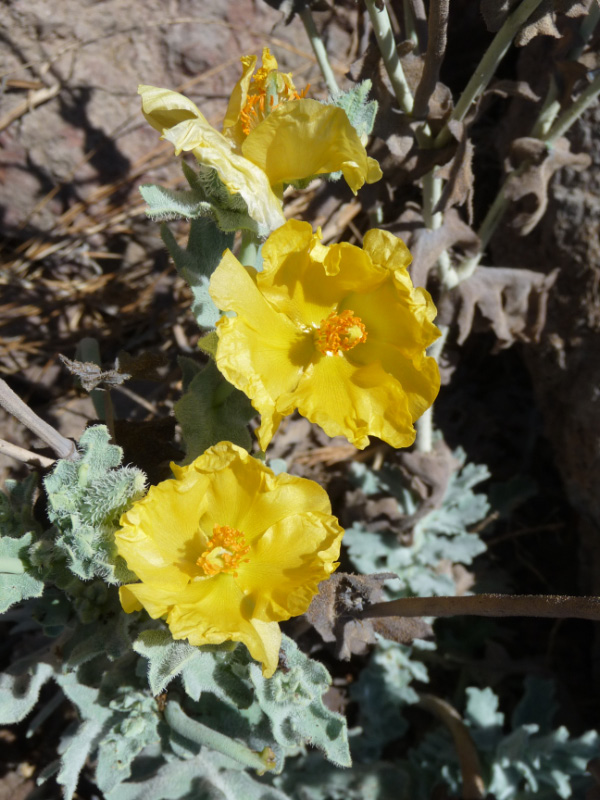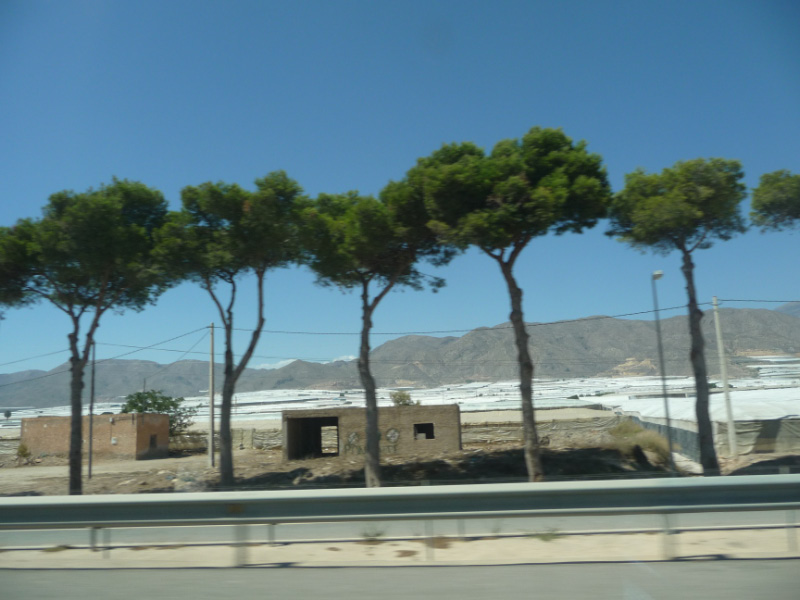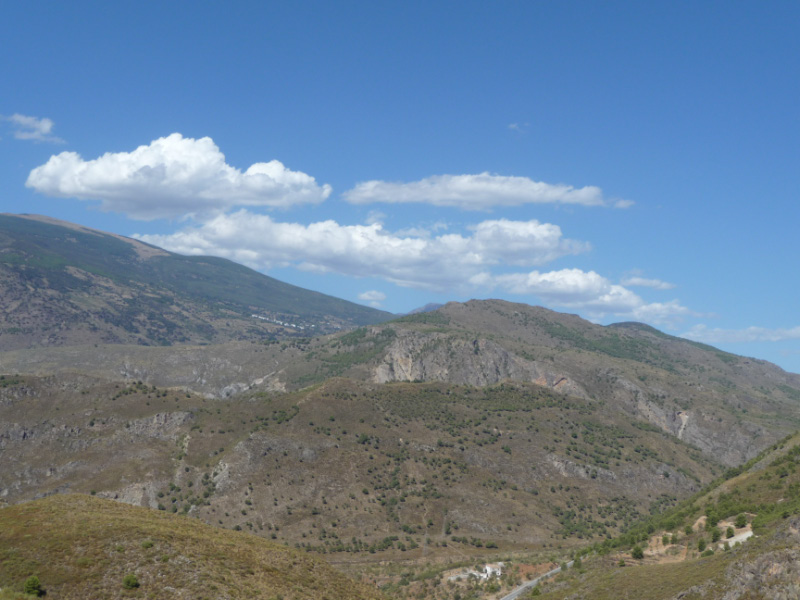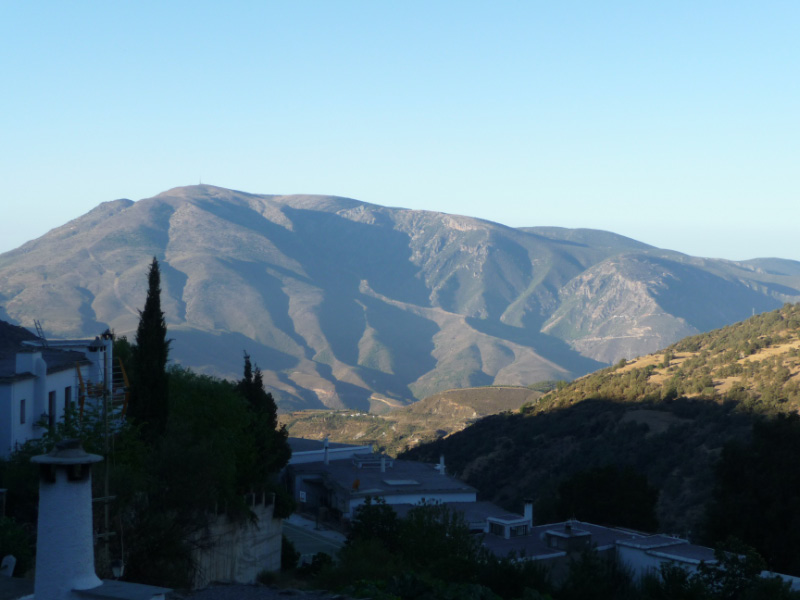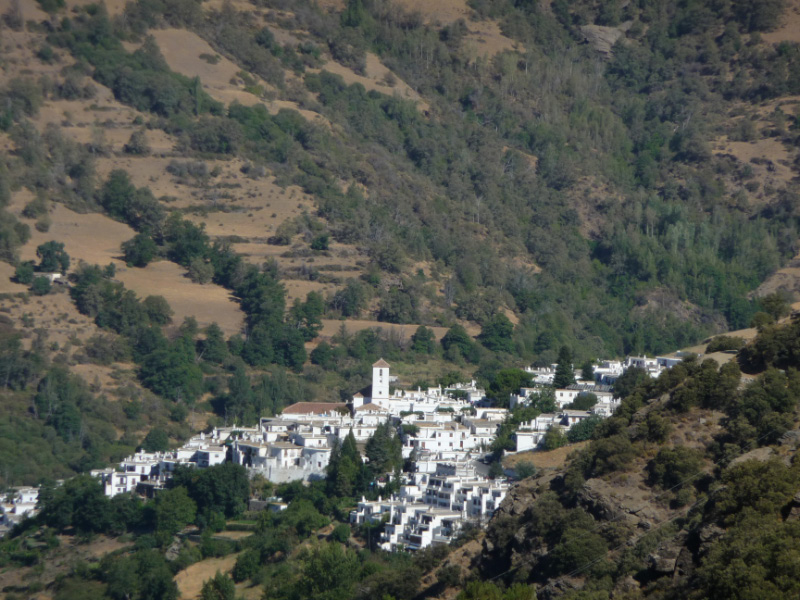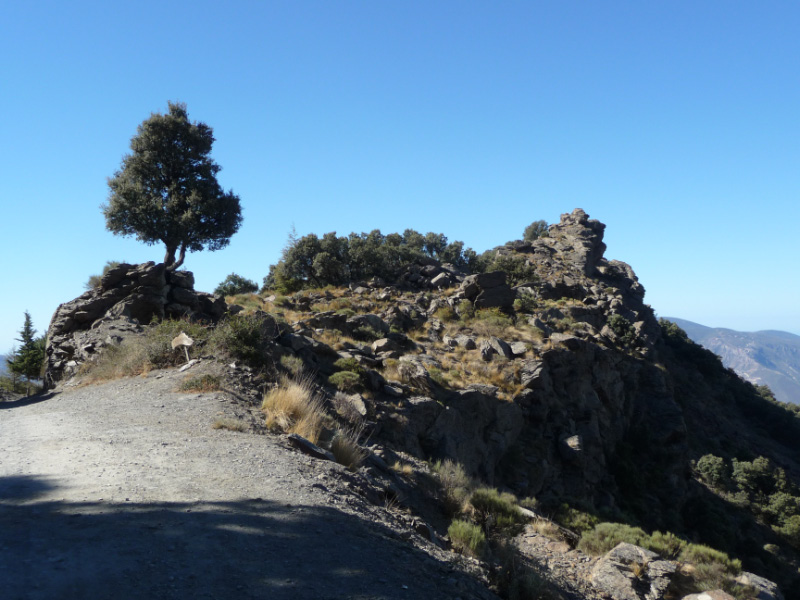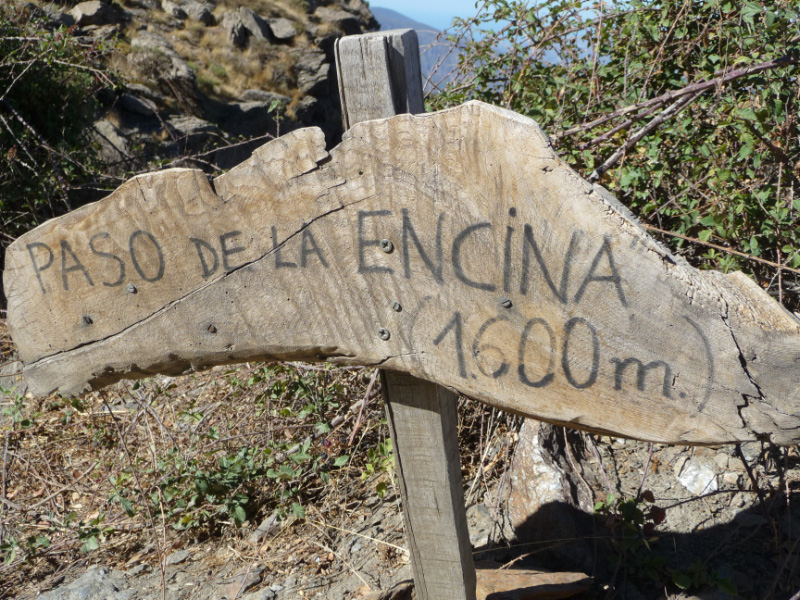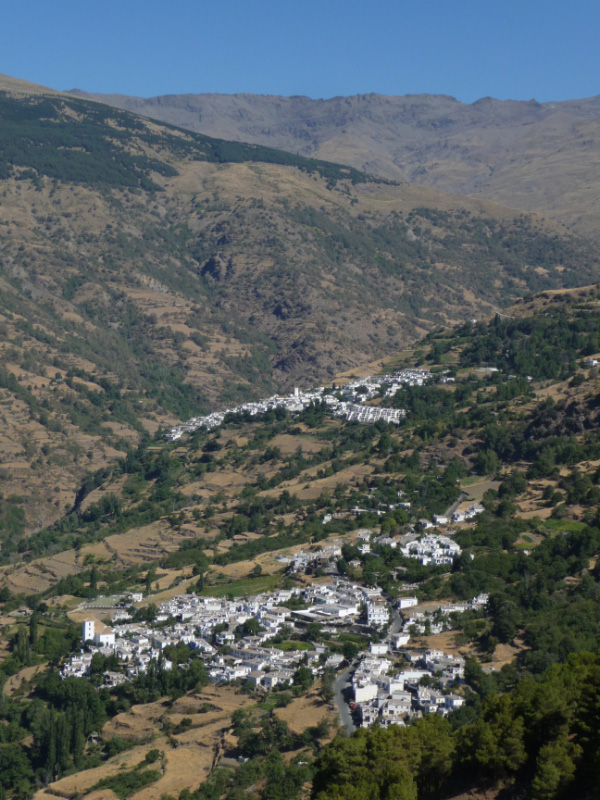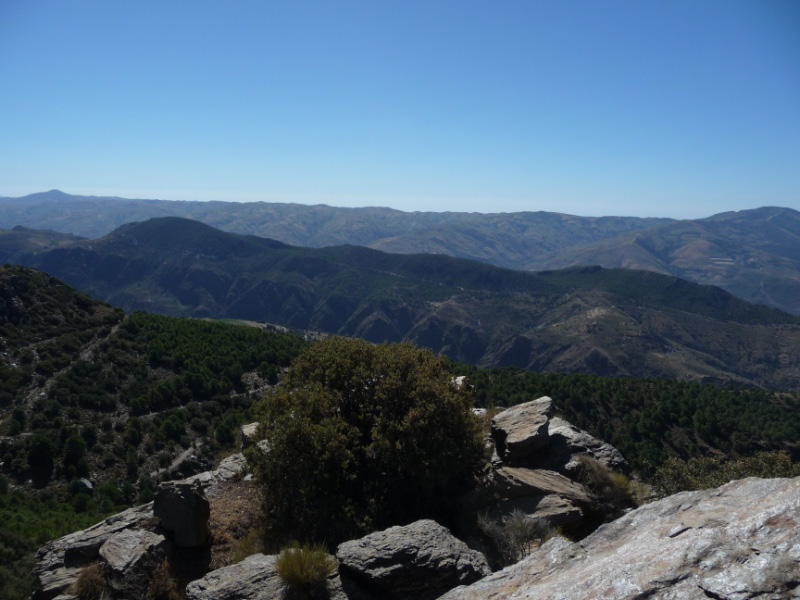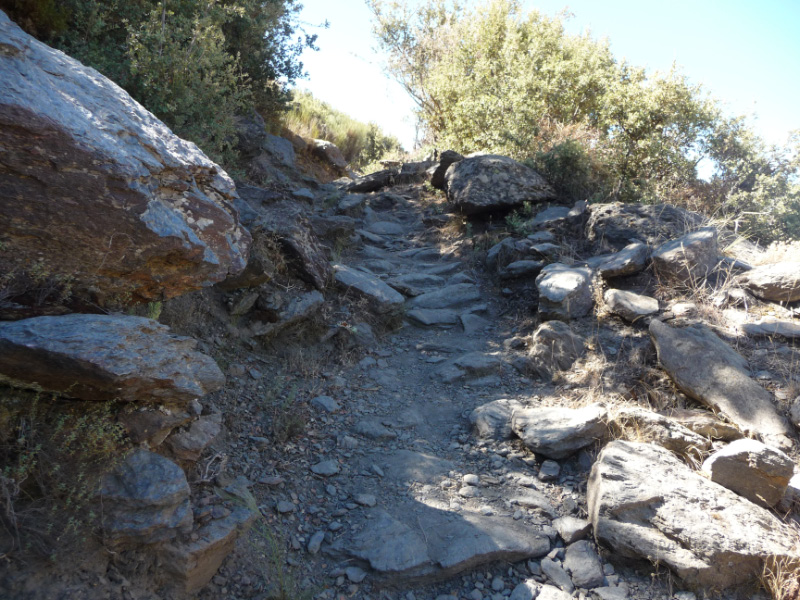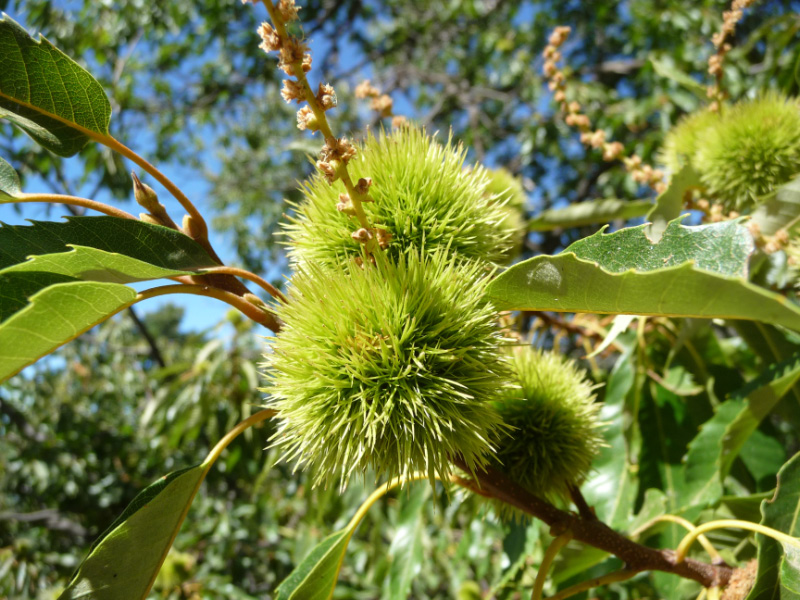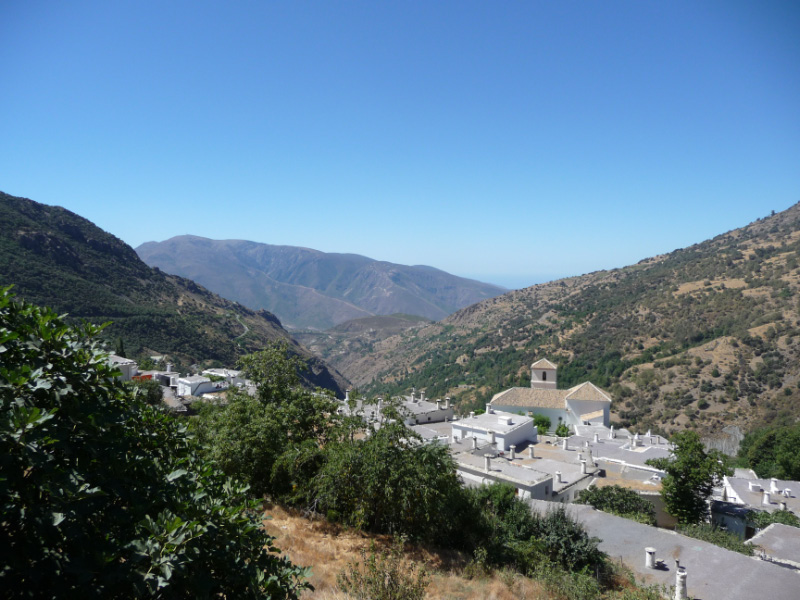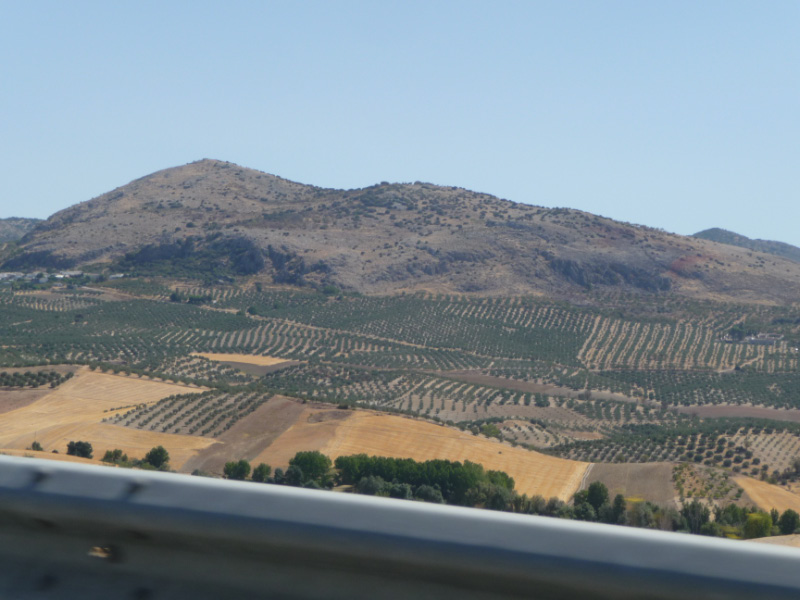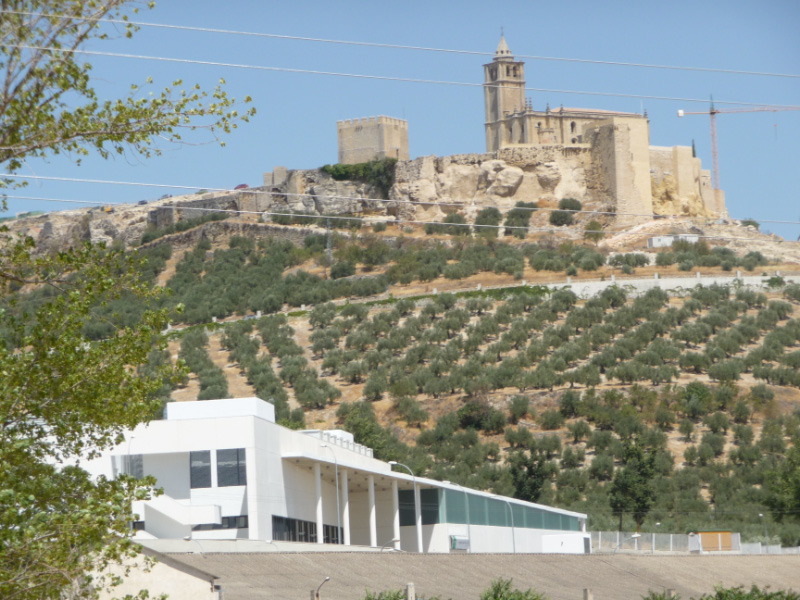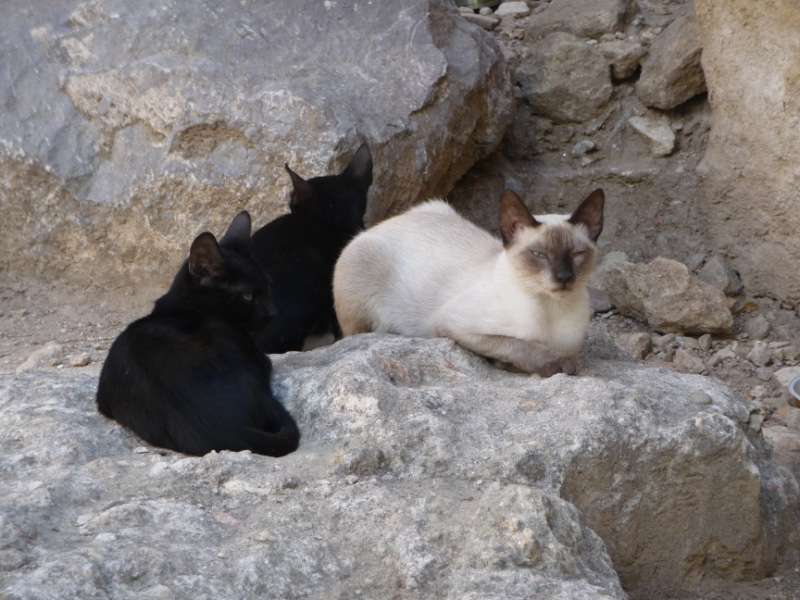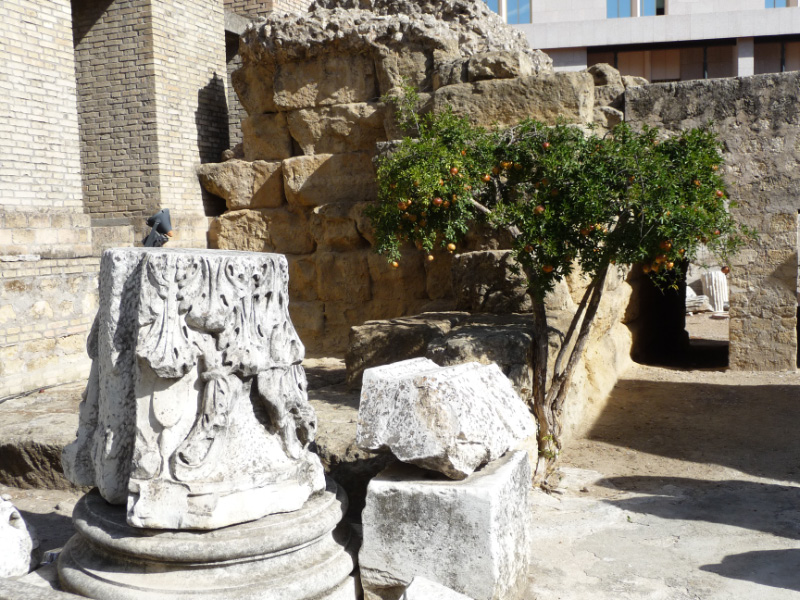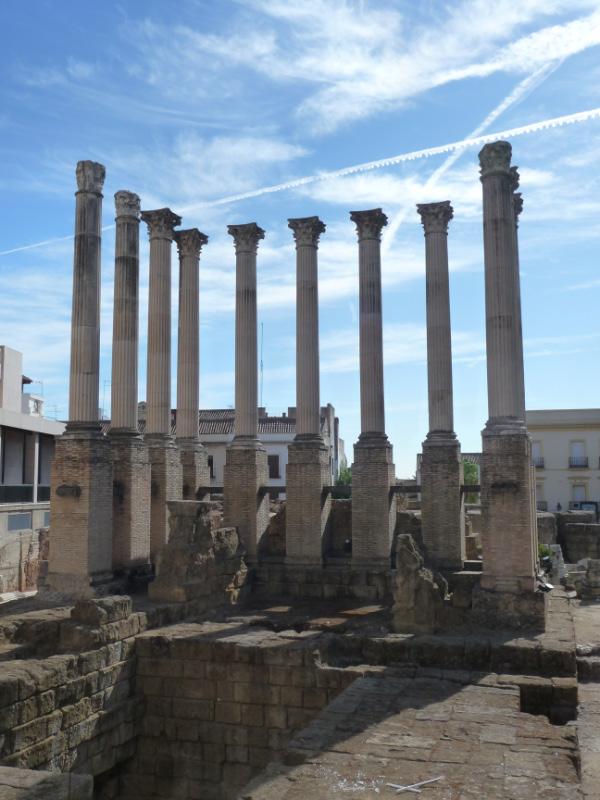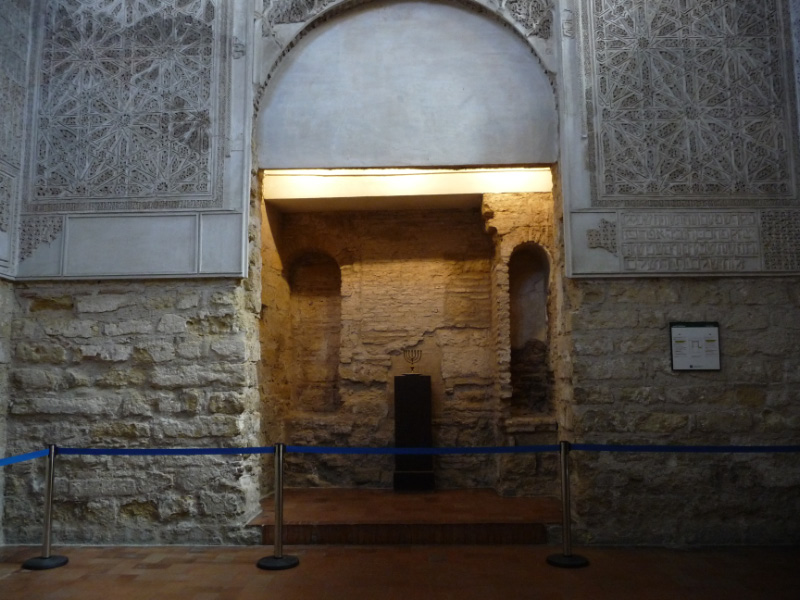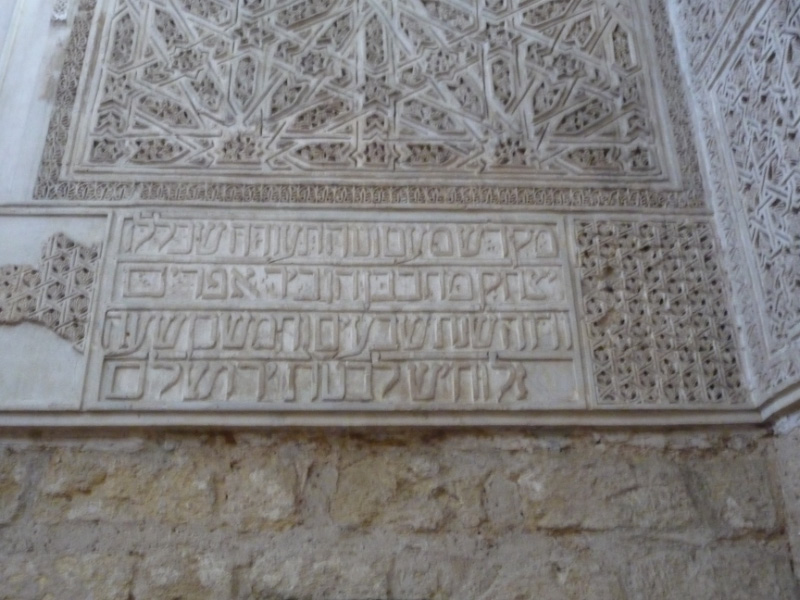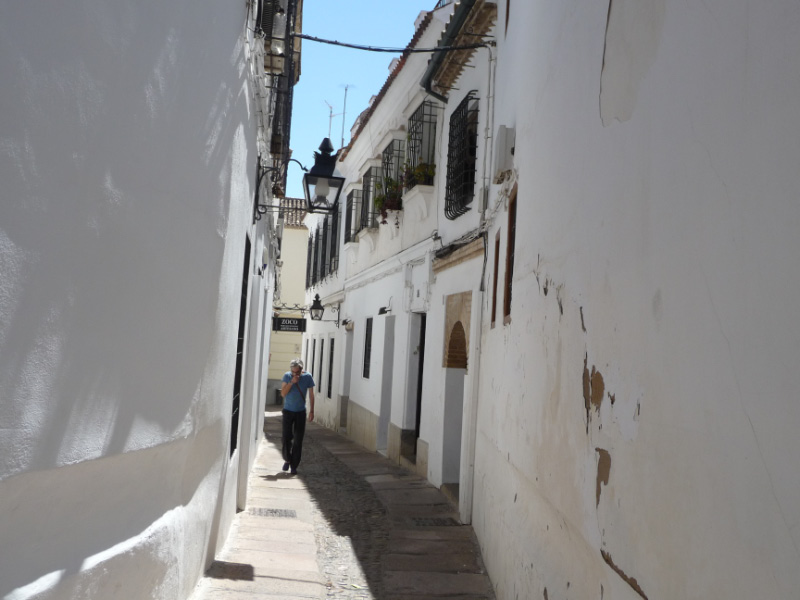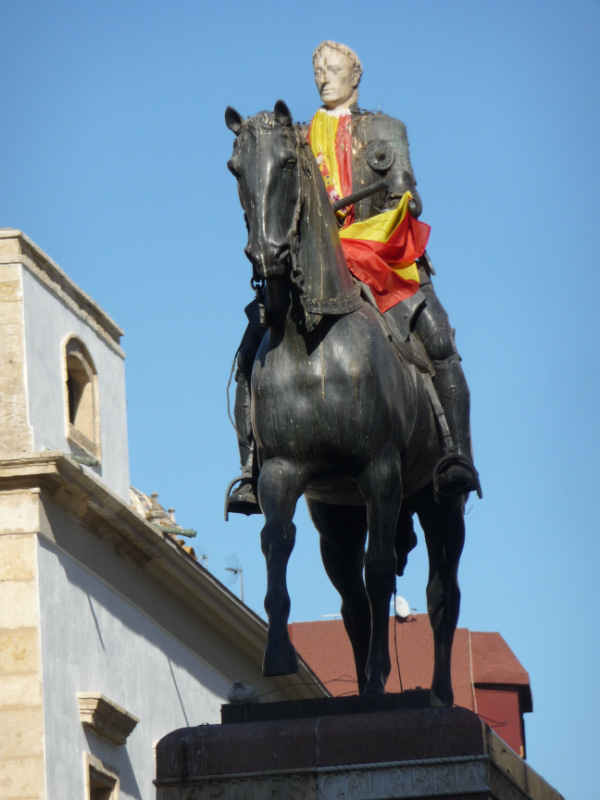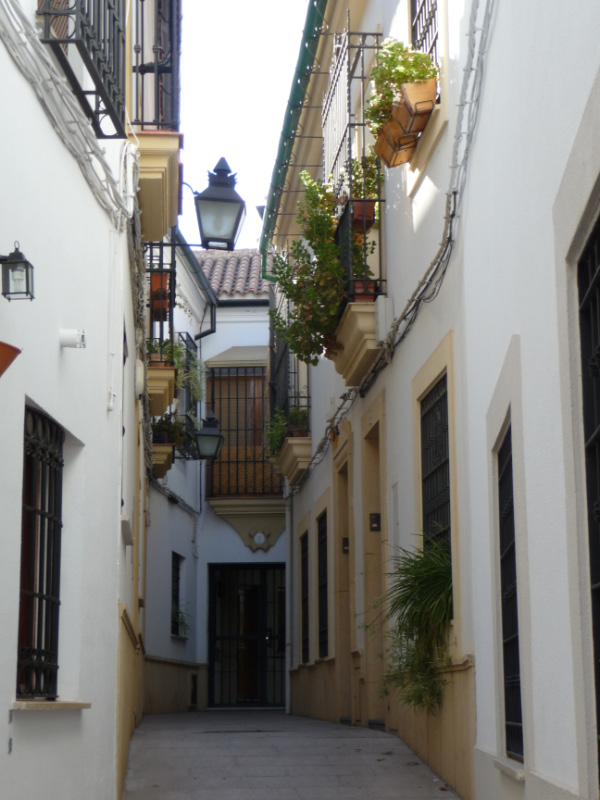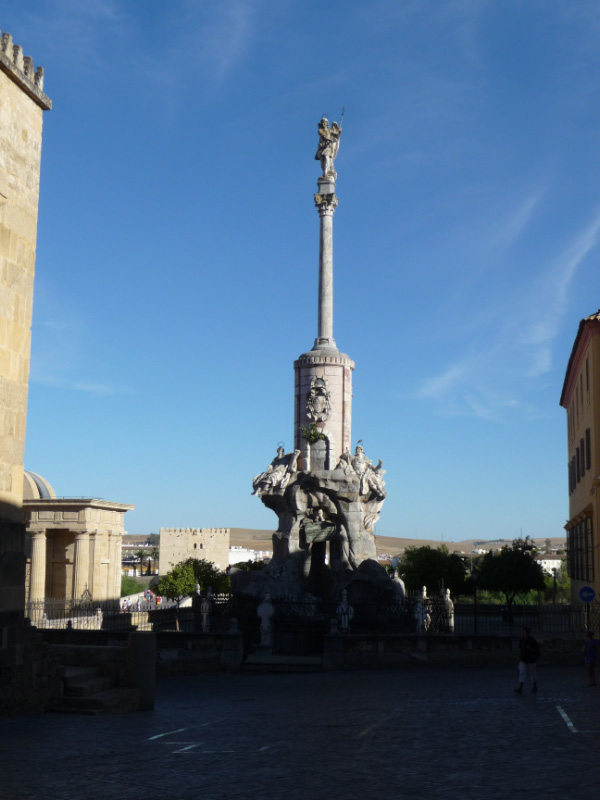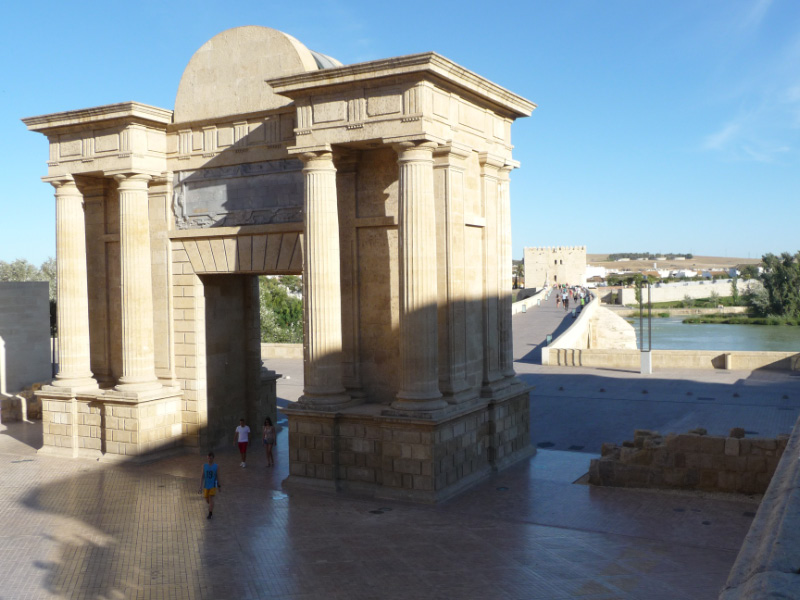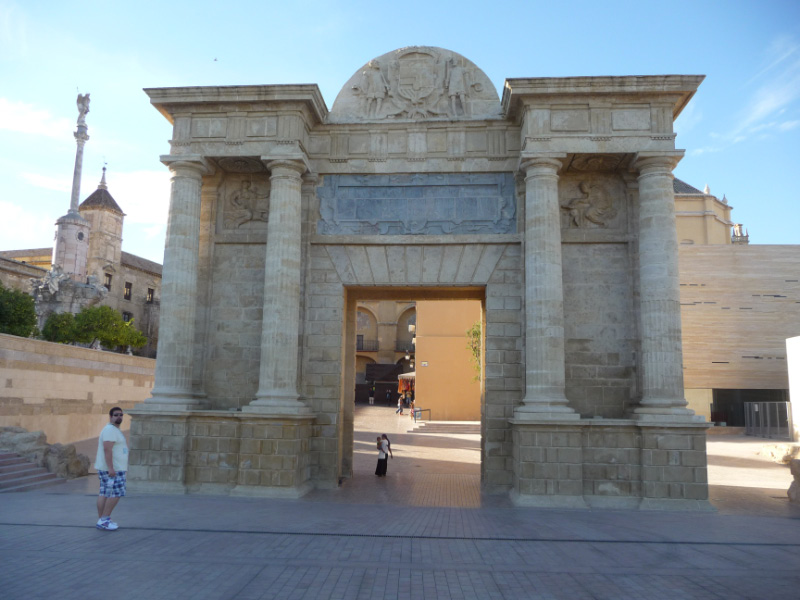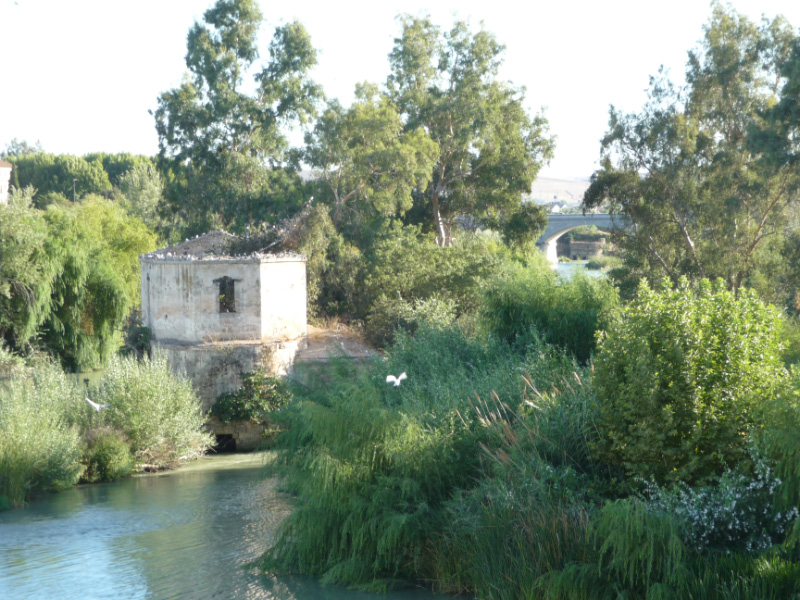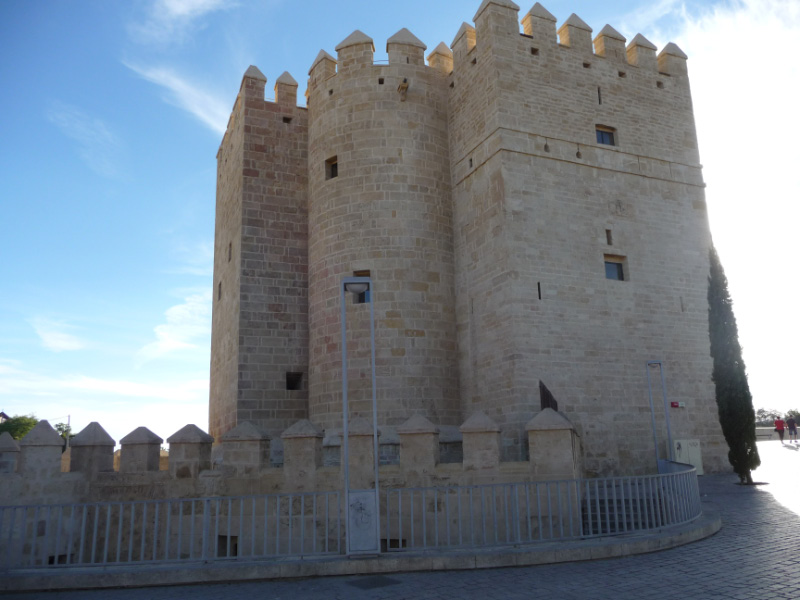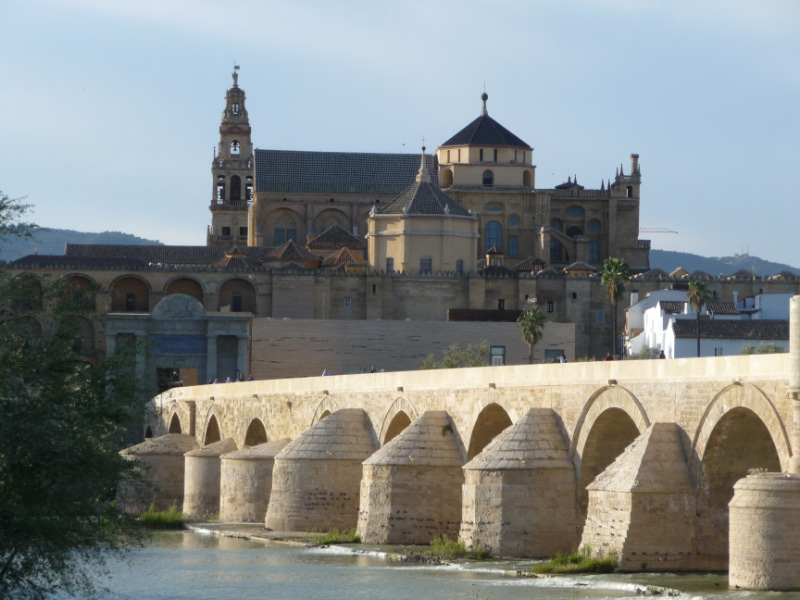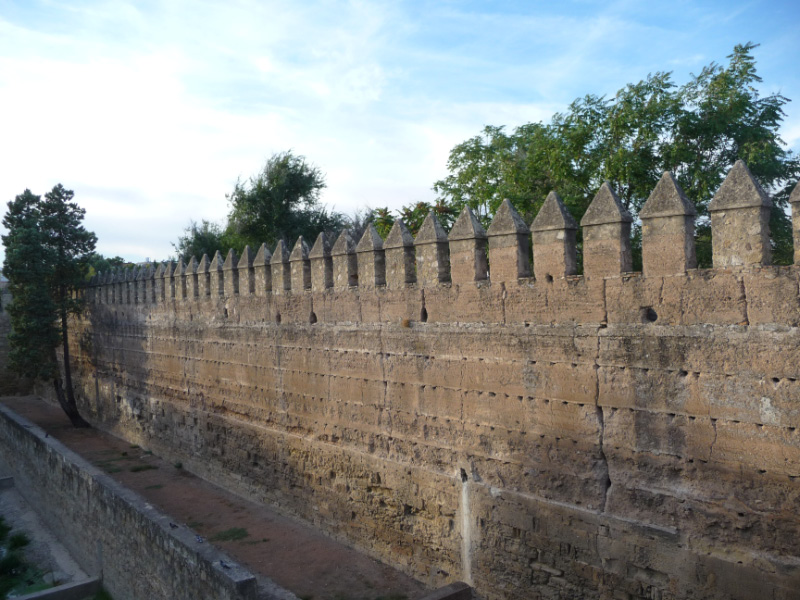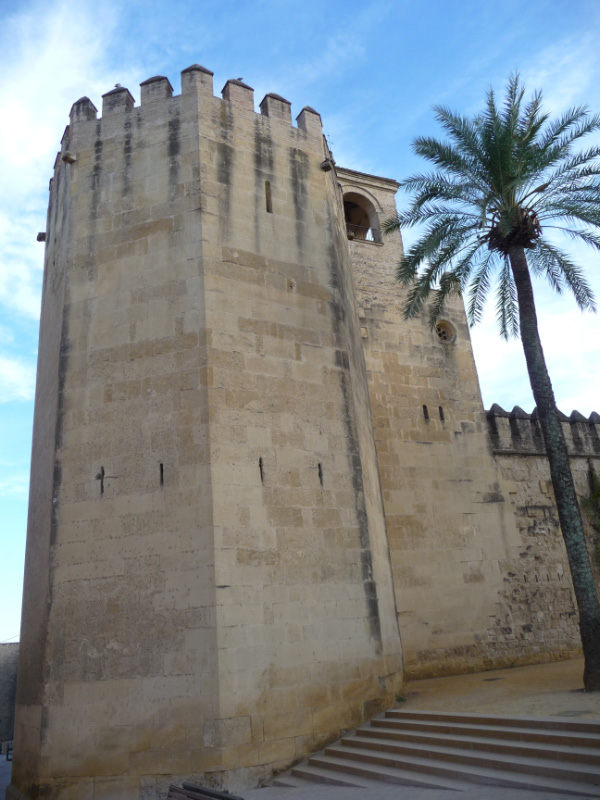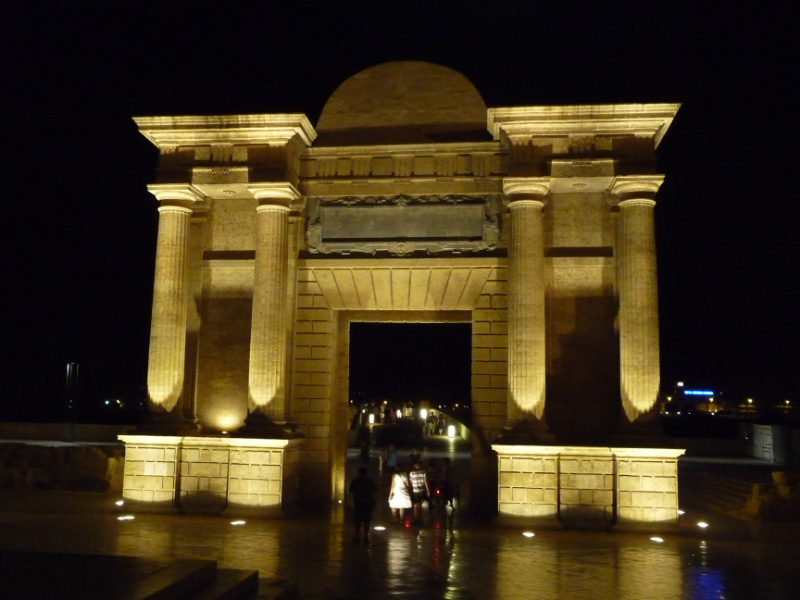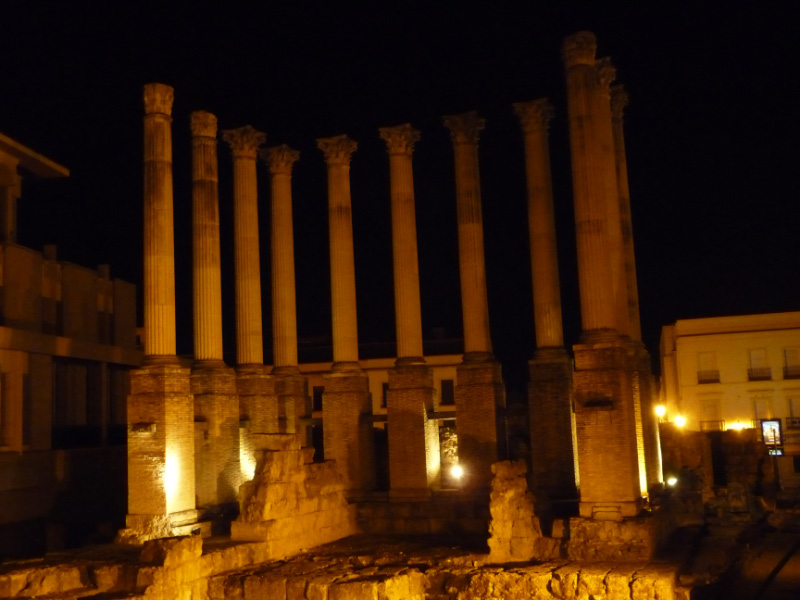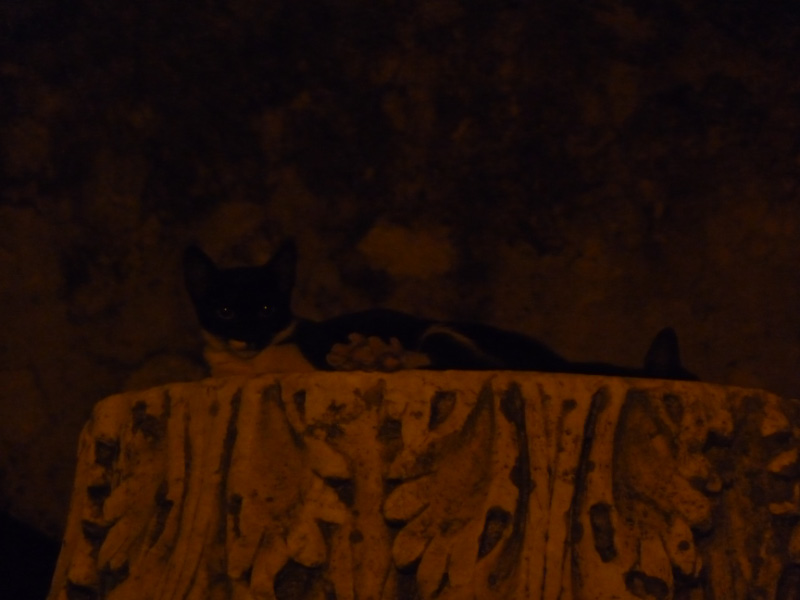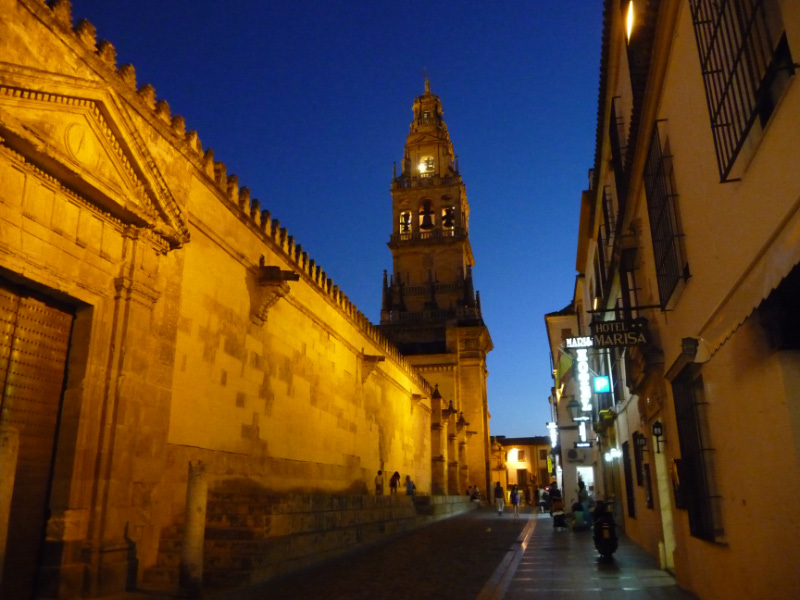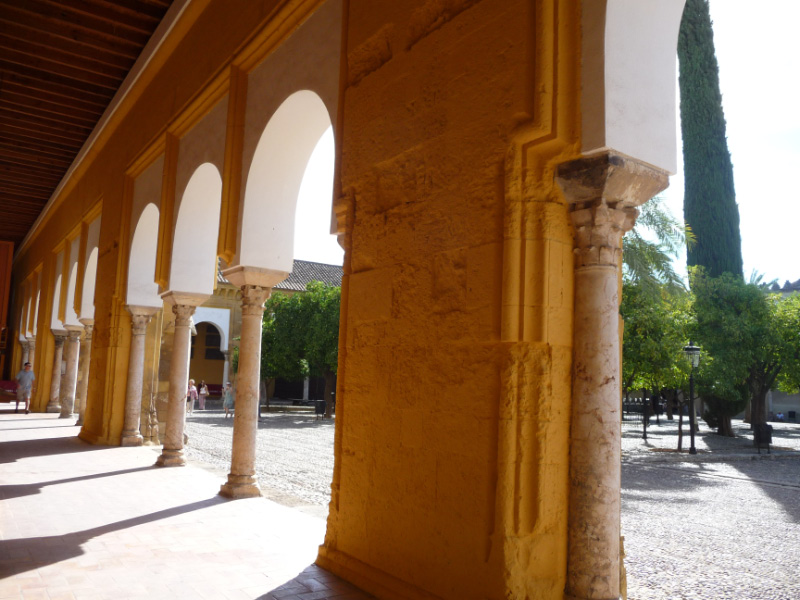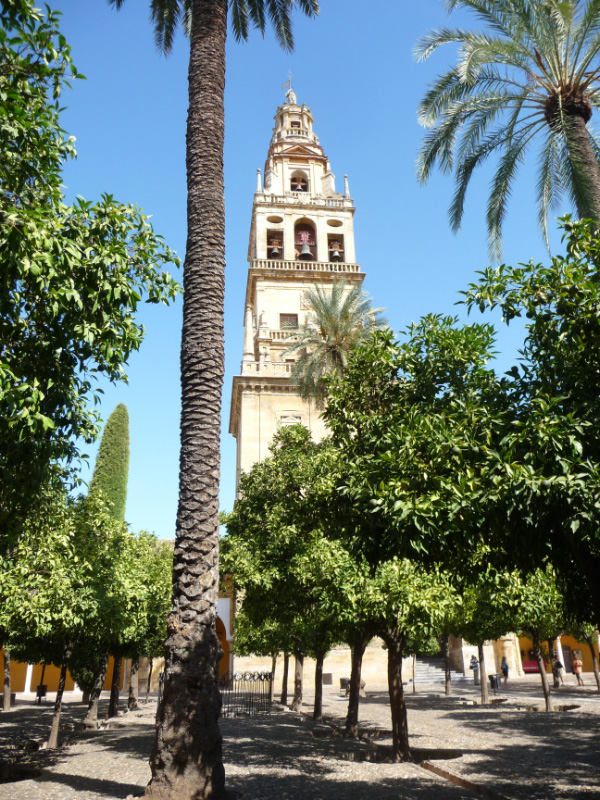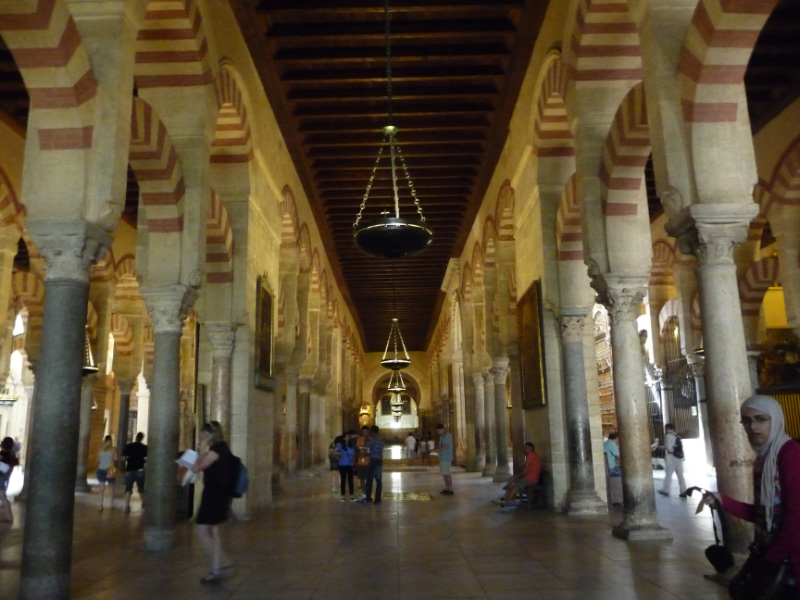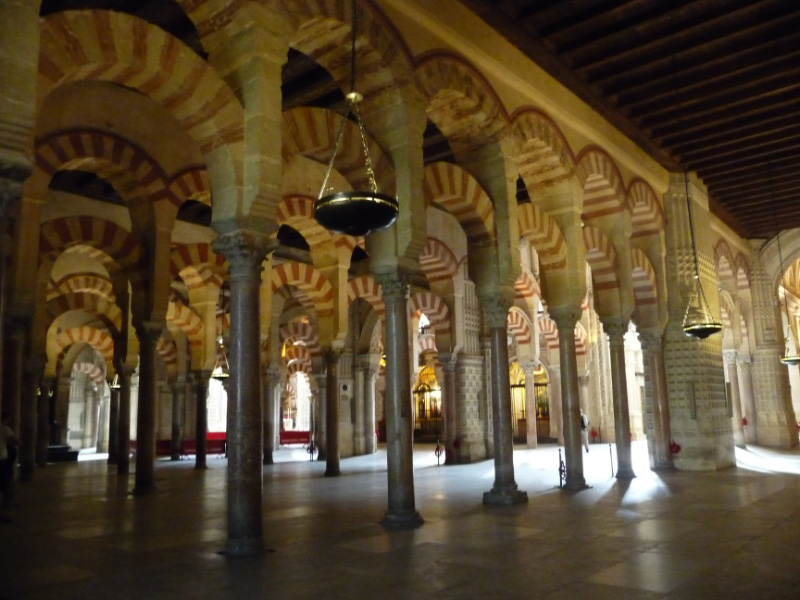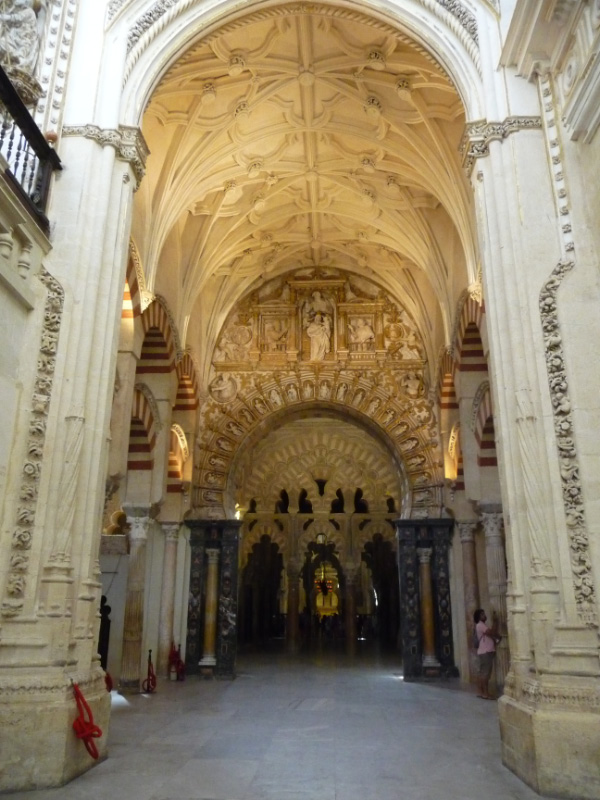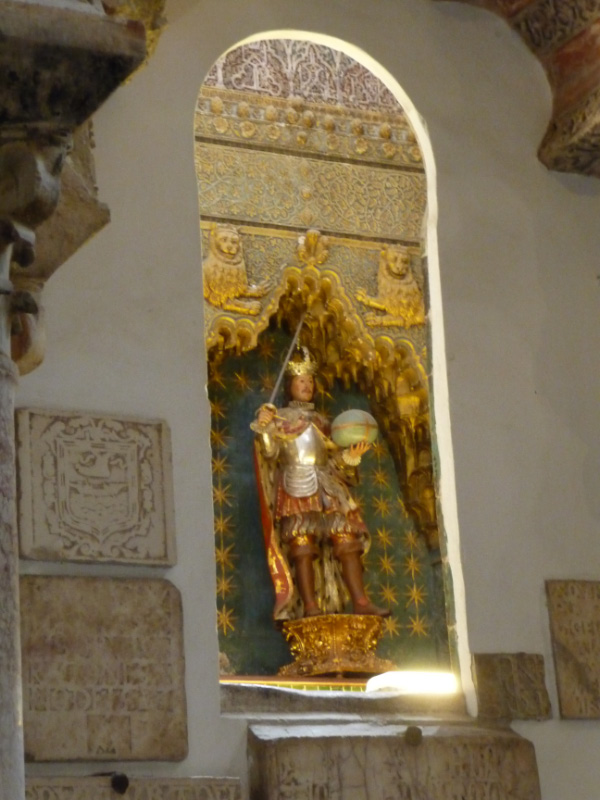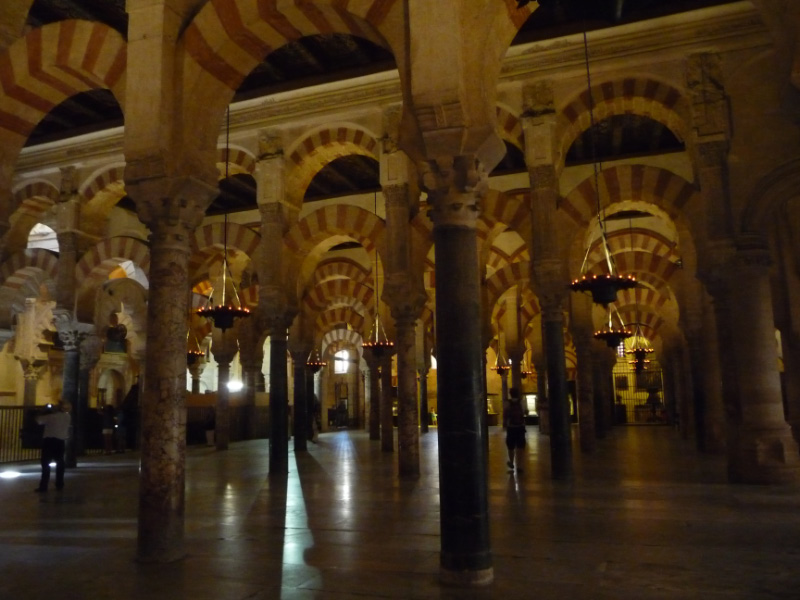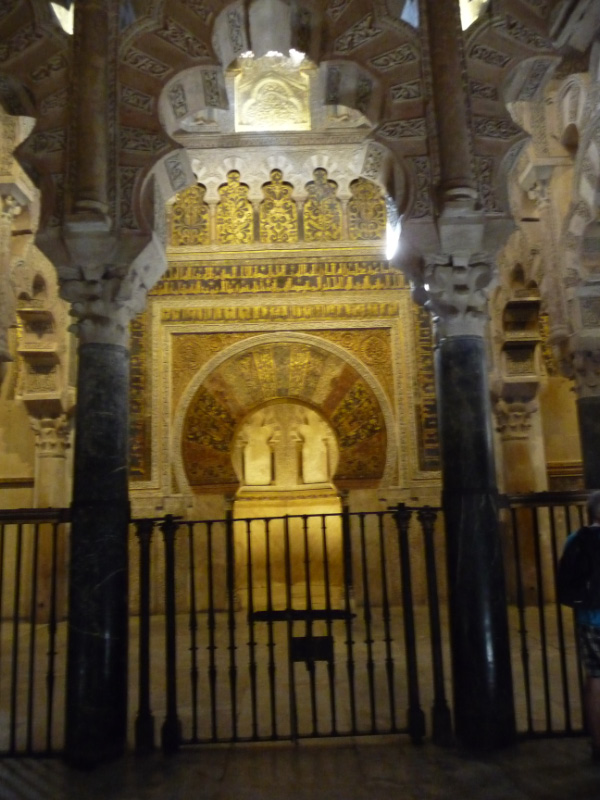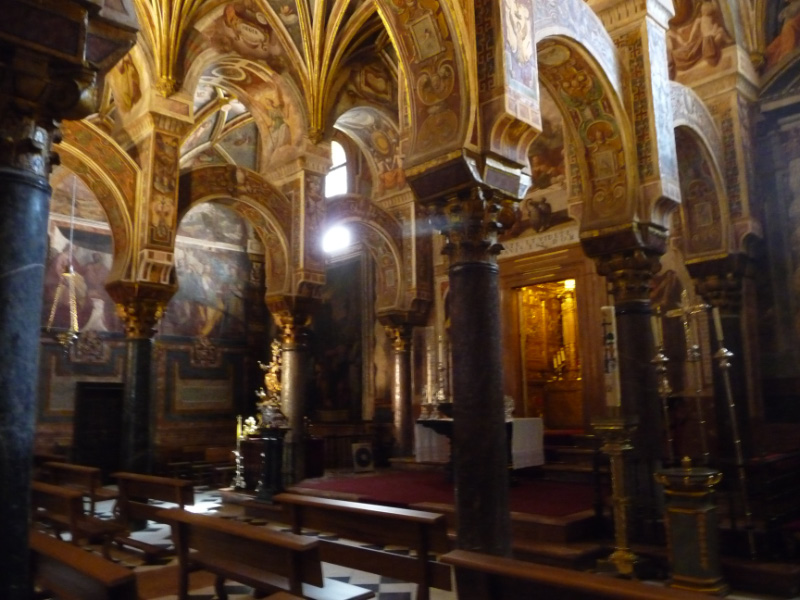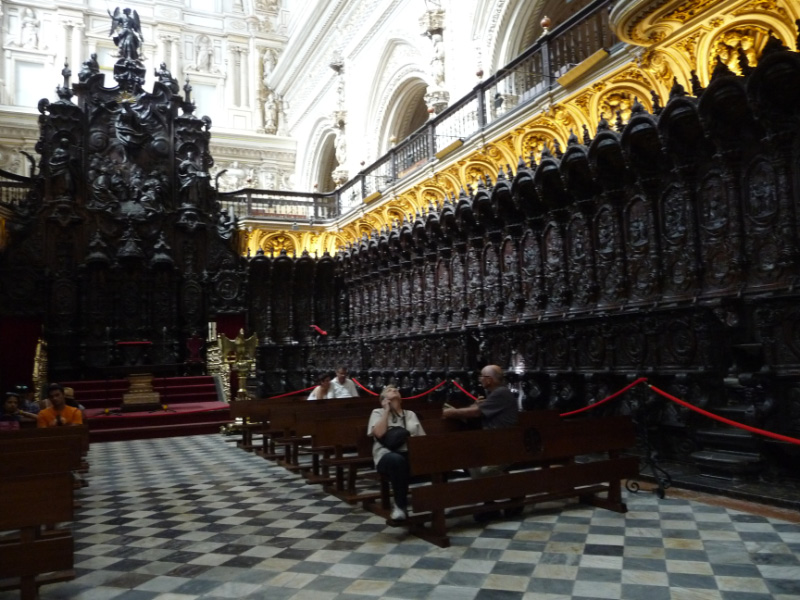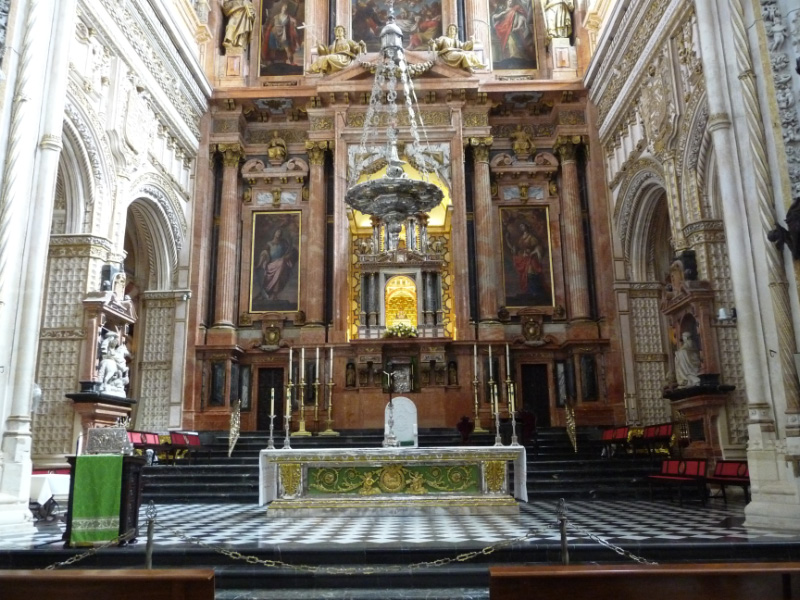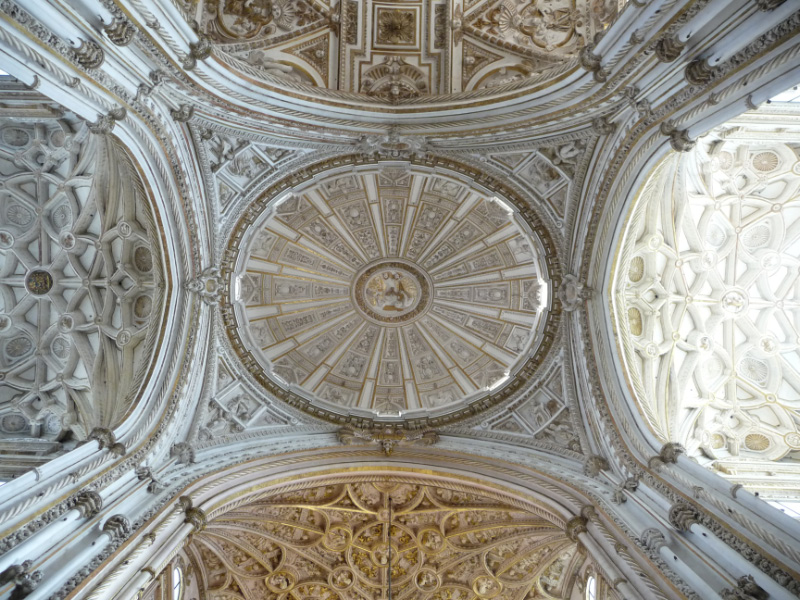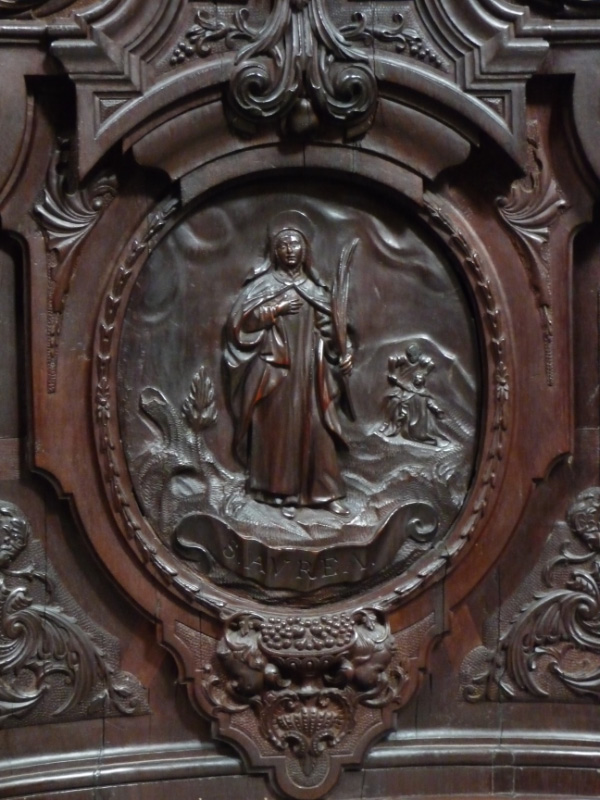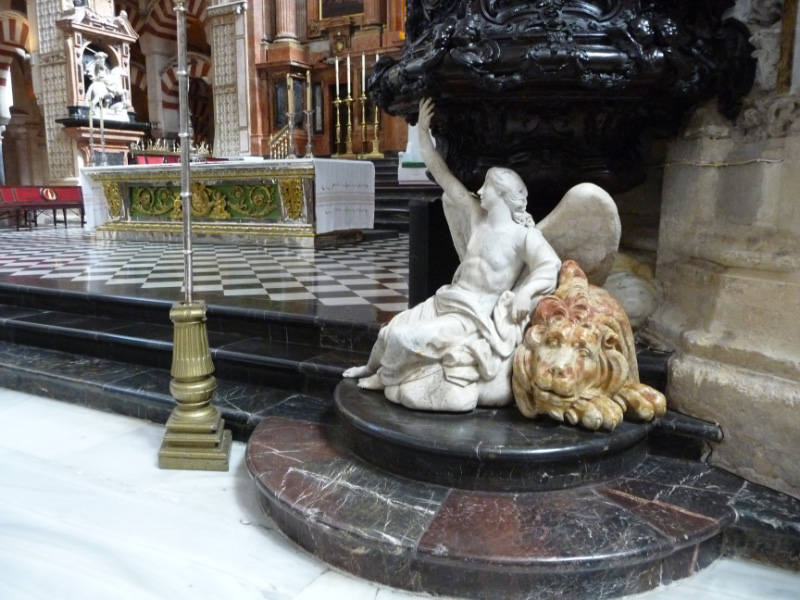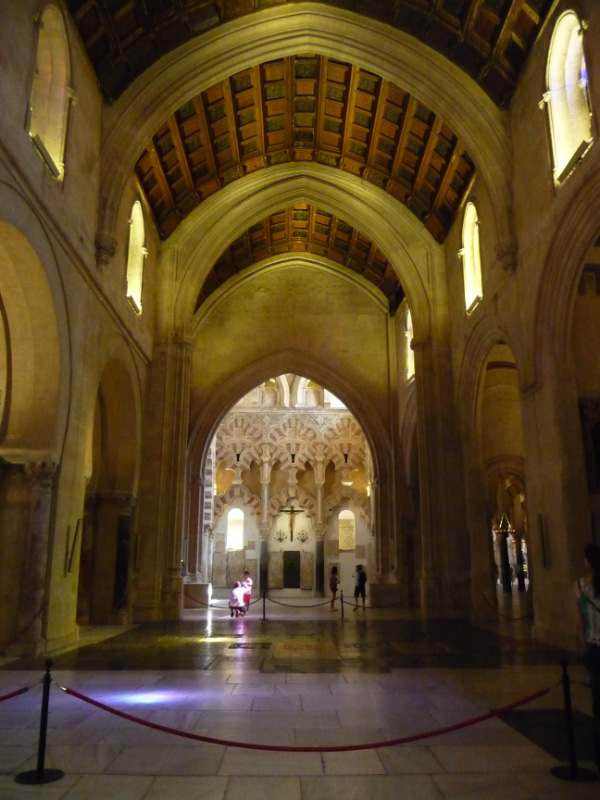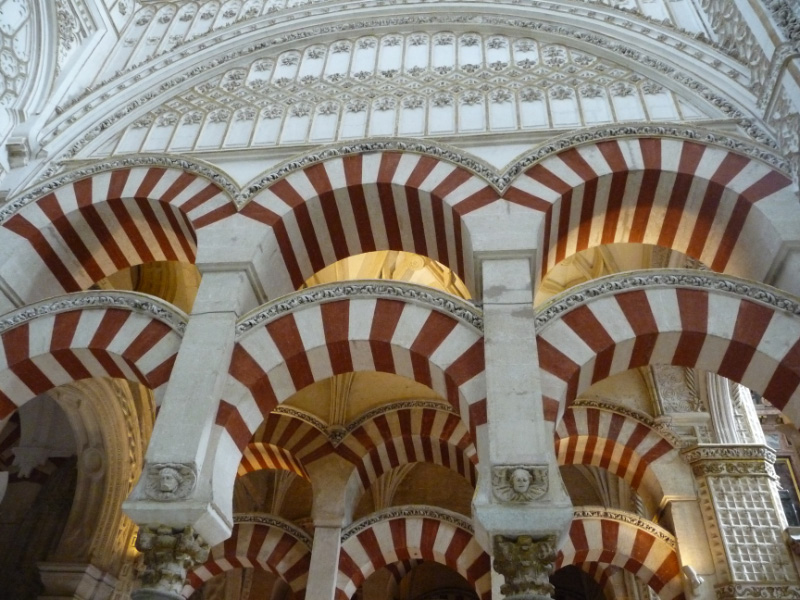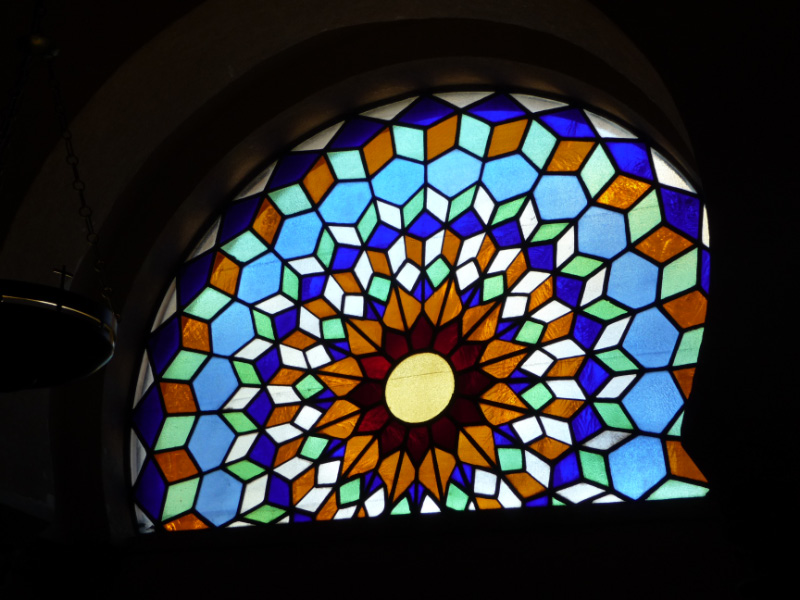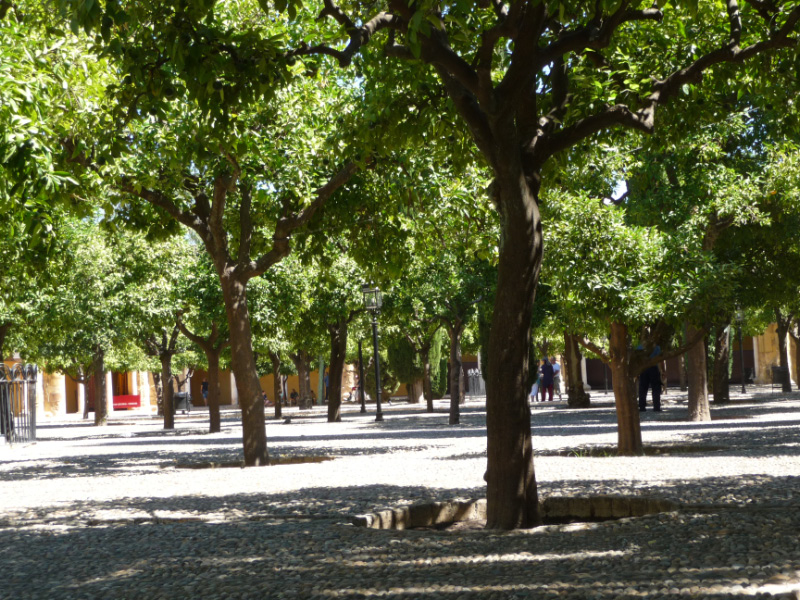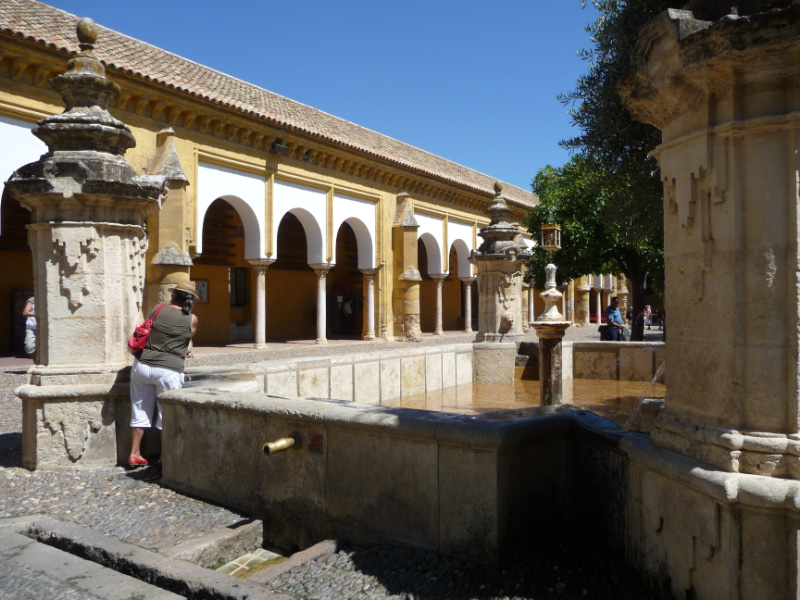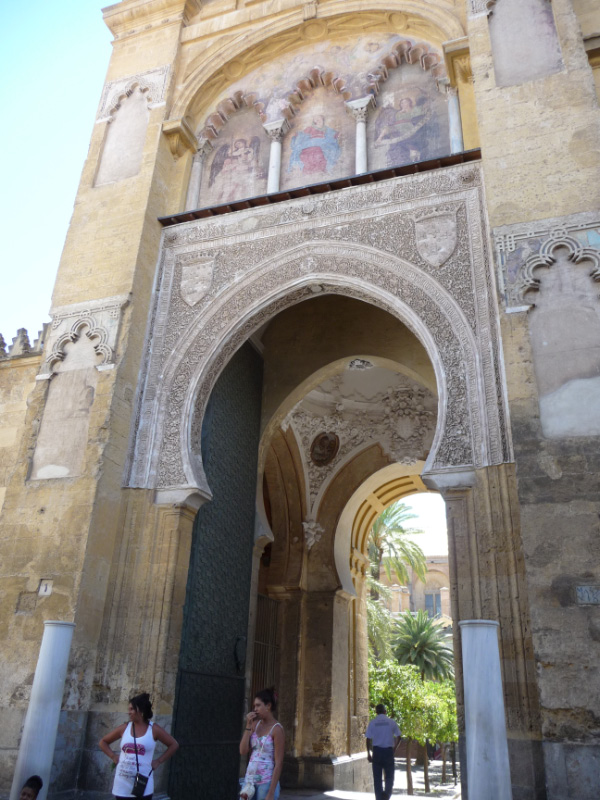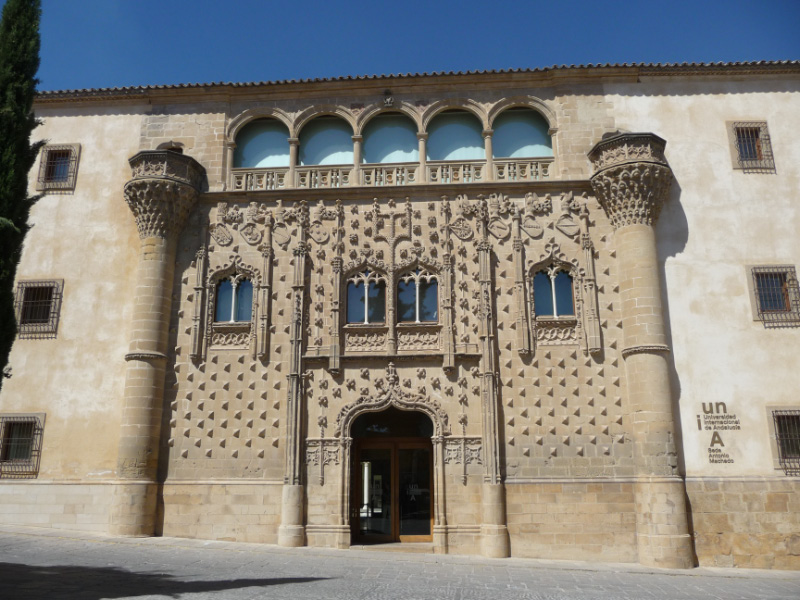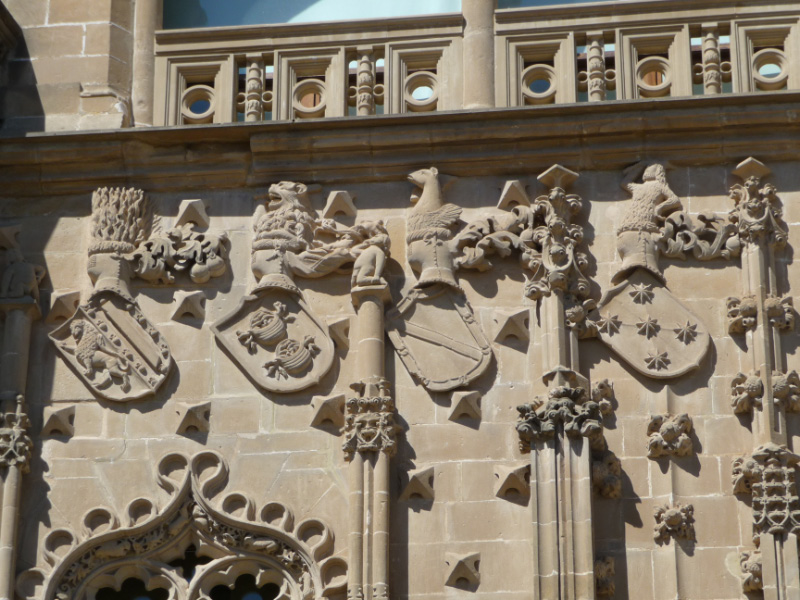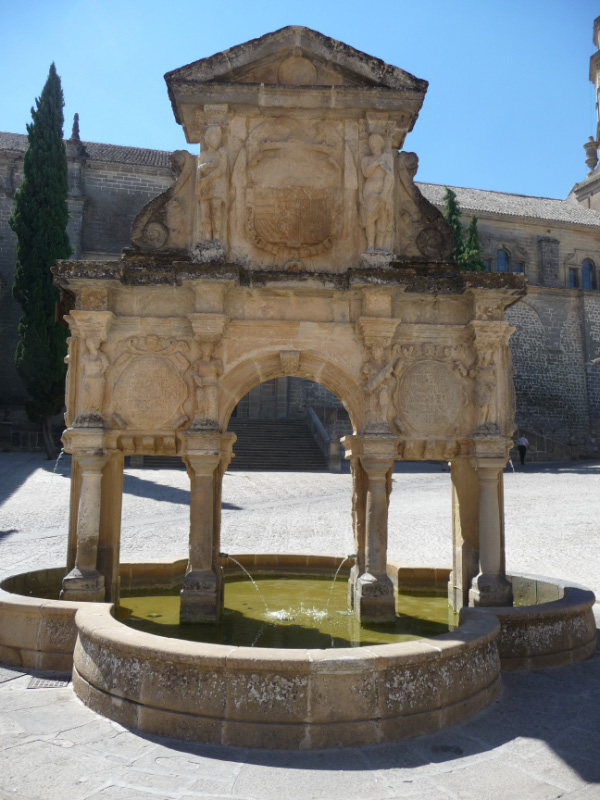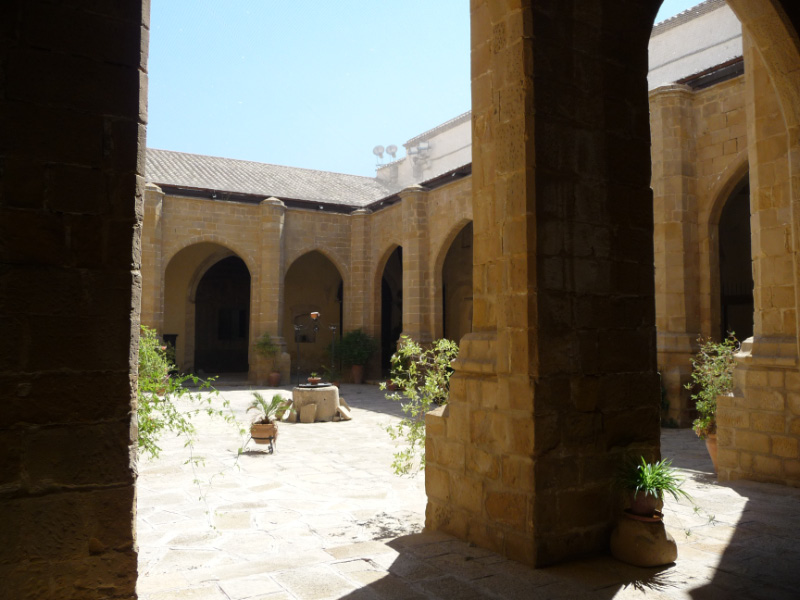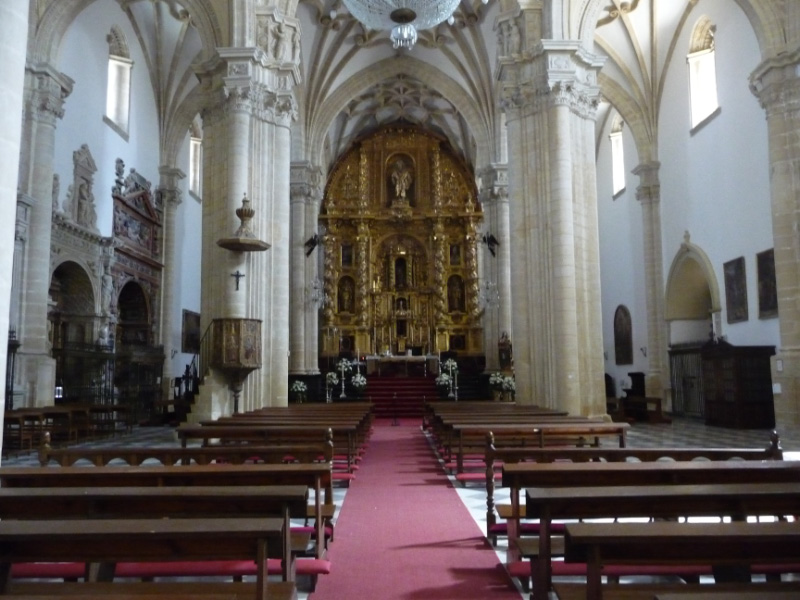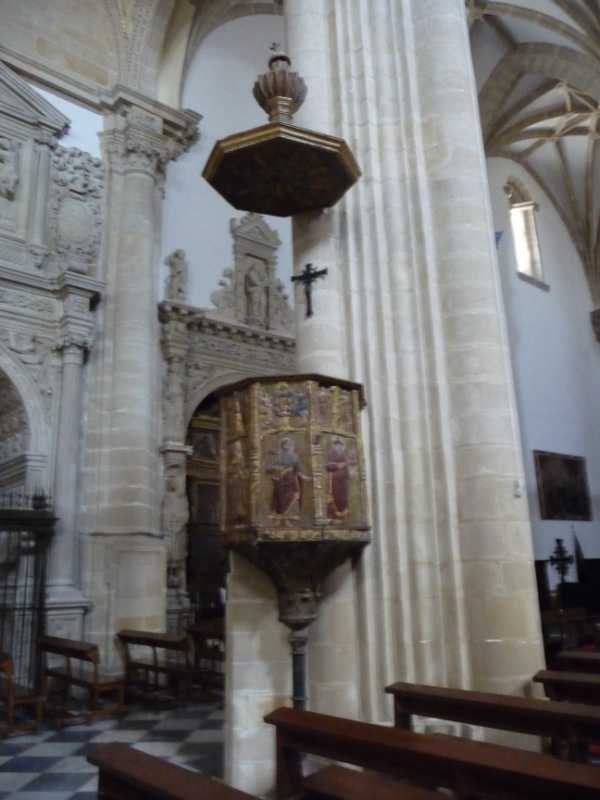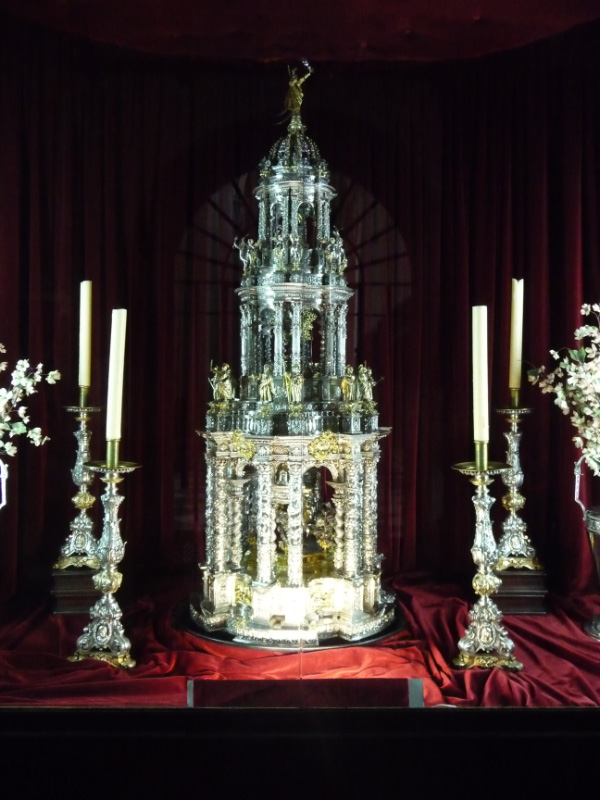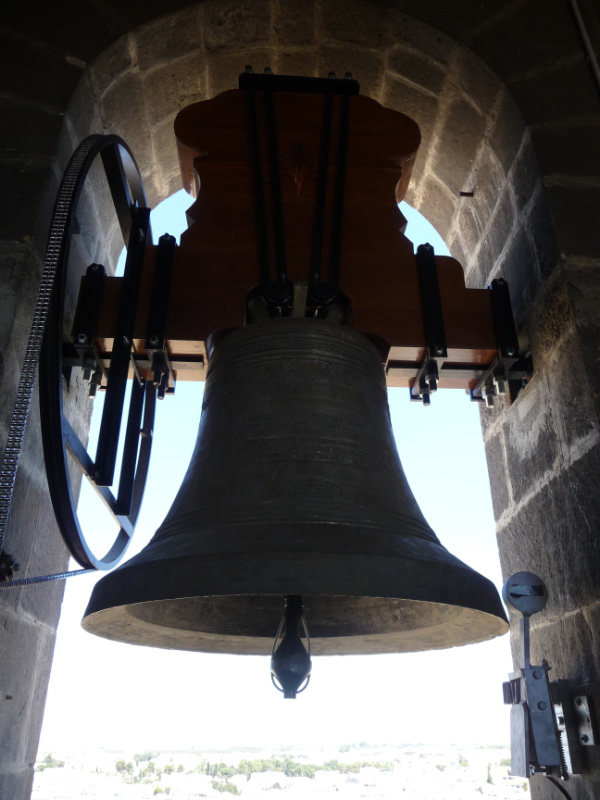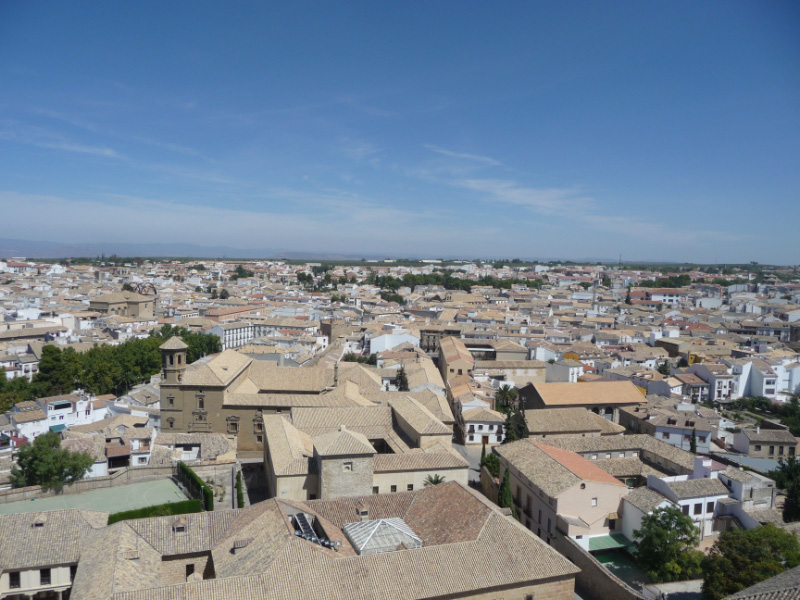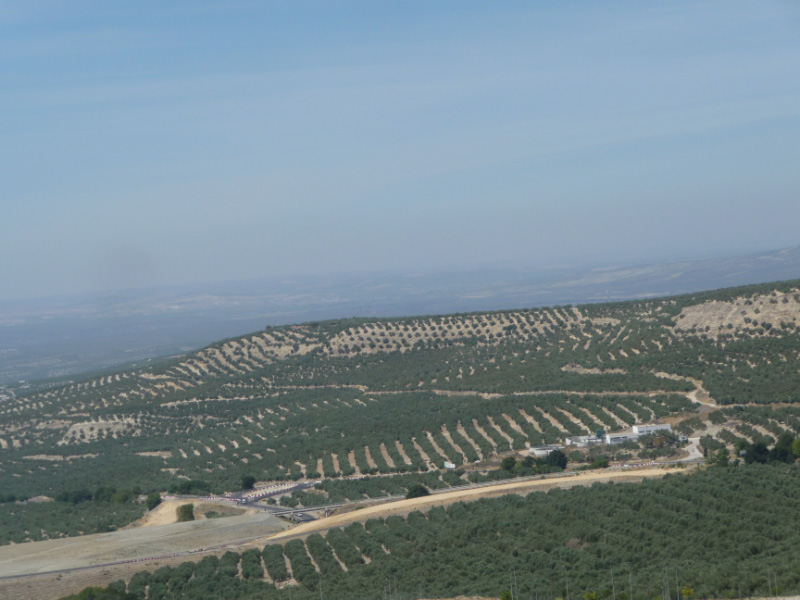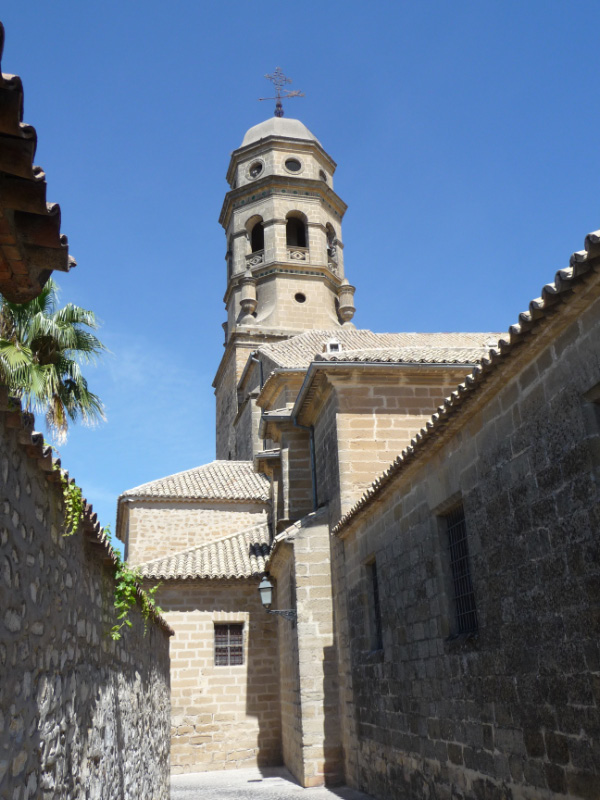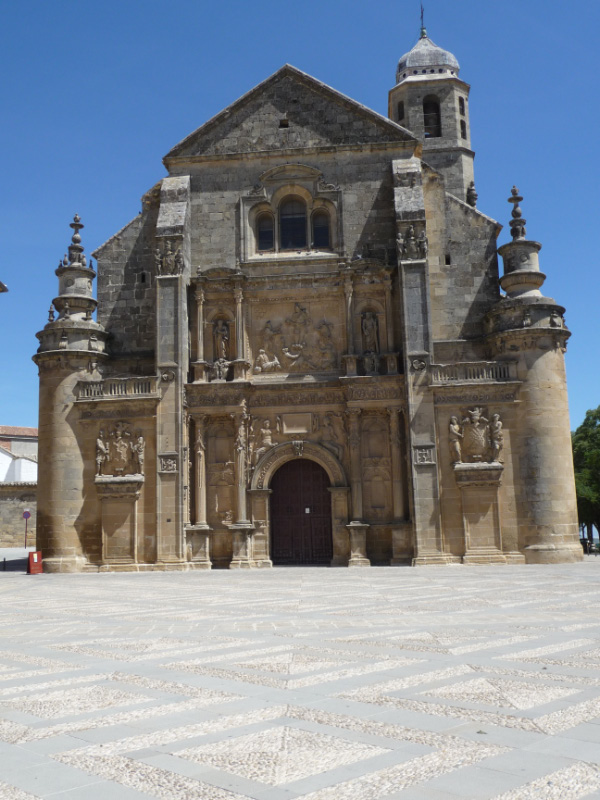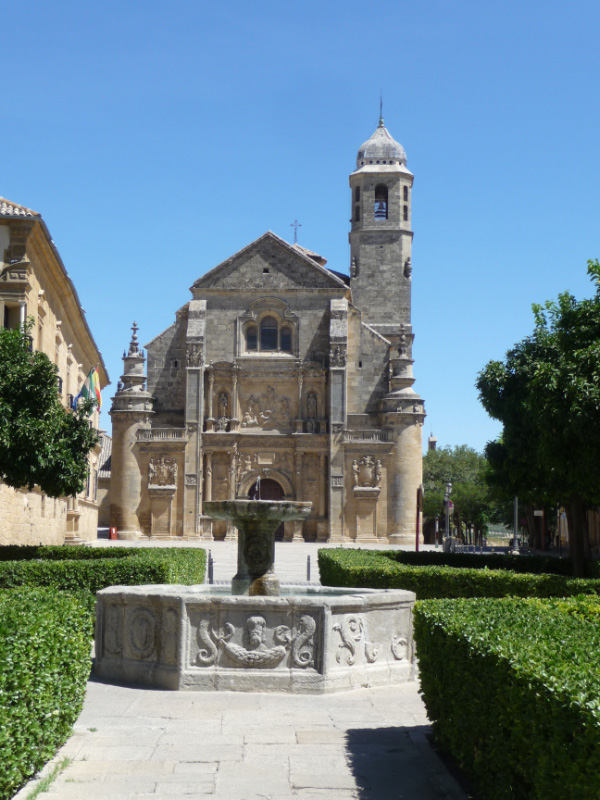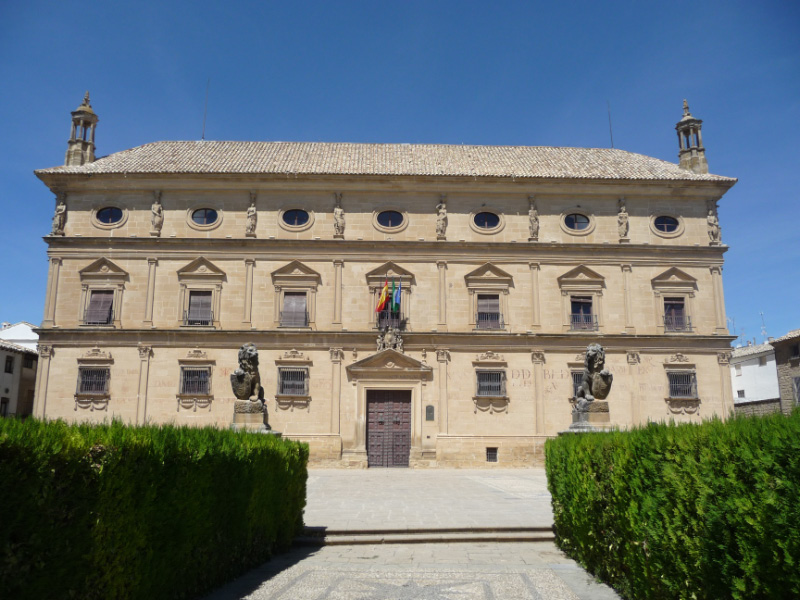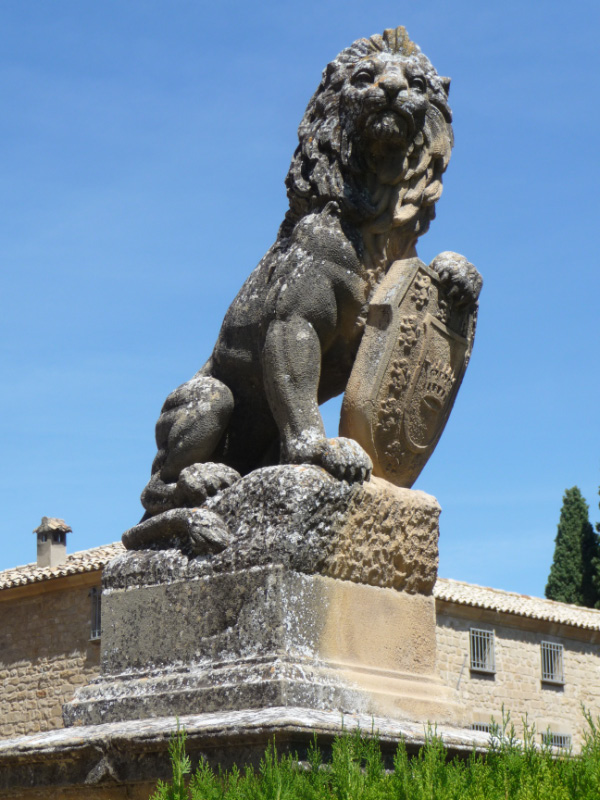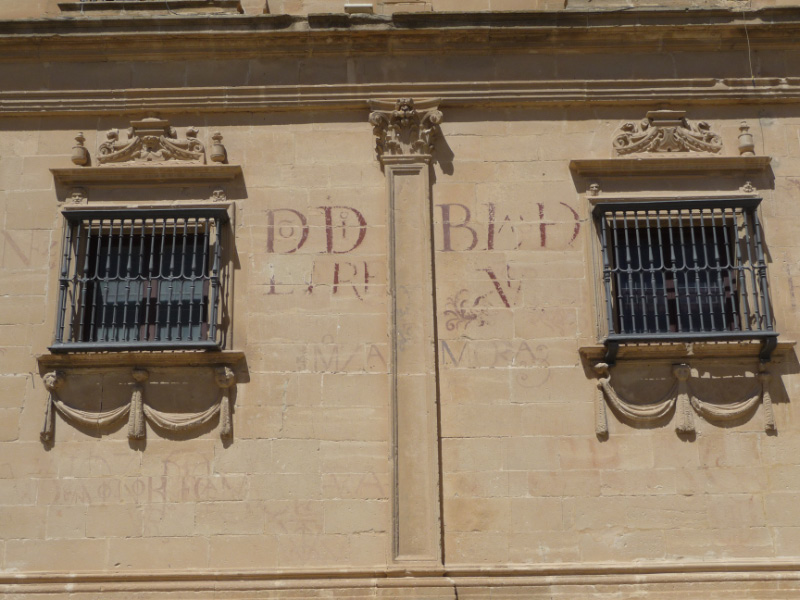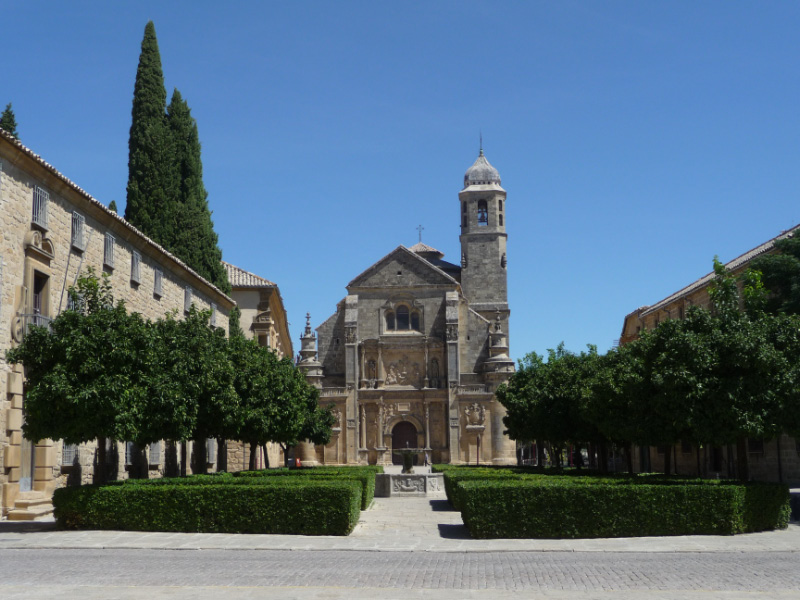Andrea’s family lives in Granada, so at Christmas, Easter and the August holidays Hayden & Andrea go to Granada to spend time with her family.
Hayden’s time in Granada during August is interrupted by the Festa de Gràcia, so he usually shares his time between Barcelona and Granada.
This year Hayden was lucky enough to have parents standing by who could drive him to Granada and bring both Andrea and Hayden back to Barcelona. For us there was the added incentive of seeing the famous Alhambra, the provocative Sierra Nevada and generally explore Andalucia.
Spain’s major roads are good. There are a few sections which are under repair and perhaps work is held up by the current financial crisis, however the 850km was a relatively easy journey.
Elche & Murcia
We stopped in Elche to see a town completely surrounded by palm trees. The roads leading into the town are bordered by palms, there are plantations of palms surrounding the town and symbols of the mighty palm throughout Elche. Palmeral of Elche (The Palm Grove of Elche) is an orchard of over 200,000 palm trees that was declared a World Heritage Site by UNESCO. It was hot in Elche – one thermometer showed 64C.
We made an overnight stop in Murcia, a lovely, university town with lots of pedestrian streets and a rather crooked tower on the Cathedral of Murcia. We indulged in steaks but they did not match the meal we had in Liechtenstein.
The road from Barcelona to Granada was a pathway through orange groves around Valencia, almond, peach and plum orchards nearer Murcia and grain crops closer to Granada.
Granada
We duly delivered Hayden to Granada and stayed in a hotel close to the city centre. Granada is a hot city in Summer, temperatures over 40C had been normal during the days before we arrived. Andrea warned us to drink plenty and stay out of the midday sun. Granada’s pedestrian streets are covered with a hessian which effectively keeps the direct sun out and creates a lovely atmosphere in the street.
After a quick orientation of the city, Andrea met us and took us home to meet the folks. We were treated to a magnificent Spanish dinner – lots of meats, cheeses and salads to start with, then the local specialty of oxtail followed by another local specialty of rice pudding.
There was lots of chatter, with Hayden and Andrea madly translating between his English speaking parents and her Spanish speaking parents. I think we had better learn some Spanish.
Andrea and Hayden had a well organised plan for us to tour the city and visit the Cathedral which was built over the Nasrid Great Mosque of Granada and Royal Chapel where Ferdinand II and Isabella I, Los Reyes Católicos (‘The Catholic Monarchs’) their daughter Joanna of Castile and Philip I of Castile, are buried. Alas, photos were not permitted. We were particularly interested in the illuminated hymn books on display in the Cathedral.
Andrea pointed out an interesting graffiti on the Cathedral wall dedicated to Jose Antonio Primo de Rivera, dubbed El Ausente (The Missing One). He launched Falange Española (Spanish Phalanx), a nationalist party inspired by Fascism and was a political rival of Franco, who had him executed. The red marking shows Grenadians distaste for the man.
Christopher Columbus is a hero in Spain – there are statues everywhere recognising his achievements, but none more than him being received by Queen Isabella – the great Catholic queen, who through her marriage to Ferdinand II united Spain. Ferdinand and Isabella bank rolled Columbus’ voyage of discovery.
Granada’s greatest attraction is the Alhambra, and in the evening we climbed to the Albaicin neighbourhood to watch the last sun glows on it. But the Alhambra is another story.
We ate in the Plaza BB Rambla on our last evening in Granada and were entertained by the merry-go-round powered by a man on a tandem bike. He took delight in cooling his young clients with a sprayer as he rode nowhere and they went around in circles. After the kiddies had left he packed up his merry-go-round and tootled off on his Vespa.
And on a final note – Granada is the Spanish word for our pomegranate. Trees full of the fruit were everywhere, as were its symbols.
The Alhambra, Granada
The highlight of any visit to the south of Spain is the Alhambra in Granada. Set on a hill above the city, it is a majestic fort, built for the last Muslim Emirs in Spain of the Nasrid dynasty and then modified for various leaders over the years.
The Alhambra is rich in Moorish architecture with open and breezy interior spaces and walls beautifully carved with Arab motifs and inscriptions or decorated by colourful tiles.
After the capitulation of the Moors to Ferdinand and Isabella in 1492, the Alhambra was used by Catholic royalty and the Palace of Charles was built on the old medina.
Water, precious in the dry plains of Spain, was directed from the nearby Sierra Nevada and fed into ponds and pools and gardens to create a green, cooling oasis.
Hayden was particularly excited to see the restoration of the Patio de los Leones (Lion’s Patio) completed.
Cabo de Gata and Costa de Almeria
With a few days available to us, the Sierra Nevada was a must visit, however Hayden had recommended we first look at Cabo Gata. We chose the route of the Valle del Zalabi east of the Sierra Nevada, a valley full of crops, wind farms and solar farms. Never have I seen so many wind turbines or such an expanse of solar panels as in this valley.
From the rocky outcrop of Cabo Gata, where on a clear day you could see Morocco, we drove along the coast, past Almeria. We were astonished at the acreage under glass and plastic. This is Spain’s food bowl and so important that most crops are grown under cover. We assumed there would be copious amount of tomatoes, cucumbers and onions as well as more exotic crops such as berries.
Sierra Nevada
Sierra, meaning serrated, is the name given to the many rocky outcrops that dot southern Spain. The most famous is the Sierra Nevada, where snow provides winter sports in a hot, dry climate and delivers water to the dry plains.
We stayed in the village of Capileira, where we actually had to drag out jumpers and sleep under doonas in the cool mountain air. We also took a recommended walk Peña del Angel (Angel Rock) to get a magnificent view of the sierra, and the tiny villages that cling to the steep mountain sides.
Córdoba
Following our visit south of Granada, we headed north to Córdoba. This is Spain’s olive growing land. We passed miles and miles of neatly arranged olive groves. How I would love to return during the fruit picking season to see production of Spanish olive oil happening.
After a disastrous battle with Jane-Tom-Tom, we finally navigated to our hotel, in a street undergoing renovation to remove cars. Like most European cities, cars are kept out of the tiny central city streets, which makes a quieter and safer experience for residents and tourists alike.
From there we explored the city of ancient narrow streets, the magnificent Puerta del Puente (Stone Bridge) with a gate on one side of the mighty Guadelquivir River and a fortification on the other side. Córdoba was the end of the navigable river and a Roman city was established there. The few remaining ruins of the Templo Romano was watched over by a contingent of cats who were comfortably out of reach of any canine predators.
Córdoba has traditionally been a city that accepts all cultures so as well as the Mosque Cathedral, there is an old synagogue, built in 1315, in the Jewish quarter which was more recently rescued and restored from a school and infirmary. Parts of the old Arab wall still stands, one of many reminders of its rich past.
The Mezquita-Catedral (Mosque–Cathedral), Córdoba
The exiled Umayyad prince Abd ar-Rahman I commenced work on a mosque in 784, which through over two centuries and under progressive leaders was to rival the largest mosque in Damascus. Strangely it is the only mosque where the mihrab was not aligned to Mecca, as it was built on the foundations of the Visigothic Christian church of St. Vincent.
The mosque was built in part using destroyed Roman buildings, including a pagan temple on the site and a nearby amphitheatre.
When the Christians drove the Moors out of Córdoba in 1236 they restored the site to a church, however rather than destroying the magnificent mosque, they simply built their church, later to become the Catedral de Nuestra Señora de la Asunción (Cathedral of Our Lady of the Assumption) inside it. Although the tourist information we were given discusses just the catholic cathedral, it is known locally as the Mezquita-Catedral (Mosque–Cathedral). A strange mixture of Arabic arches painted in ochre and white and towering richly decorated christian ceilings, the mirhab next to the monstrance, chapels interrupting the line of columns, space and clutter all mixed up.
It is one of those places that you leave feeling overwhelmed by its sheer size and beauty. Better than that, it is a true display of cultural integration, despite the many wars that have been part of life in Spain forever.
Baeza and Ùbeda
Baeza and Ùbeda are small towns east of Córdoba which experienced a massive growth from the production of textiles in the 16th century. The local nobles built massive homes for themselves and beautiful churches to demonstrate their wealth. The towns soon lost their wealth and the population remained static, so rather than these magnificent buildings being modified or destroyed by modernity, they remained as an expression of past wealth. Today they are UNESCO heritage towns for their unspoilt architecture.
e_header.jpg)

